Disrupting for Good: AI, ...
Online Conference
28 Jan 2026 / 29 Jan 2026 read more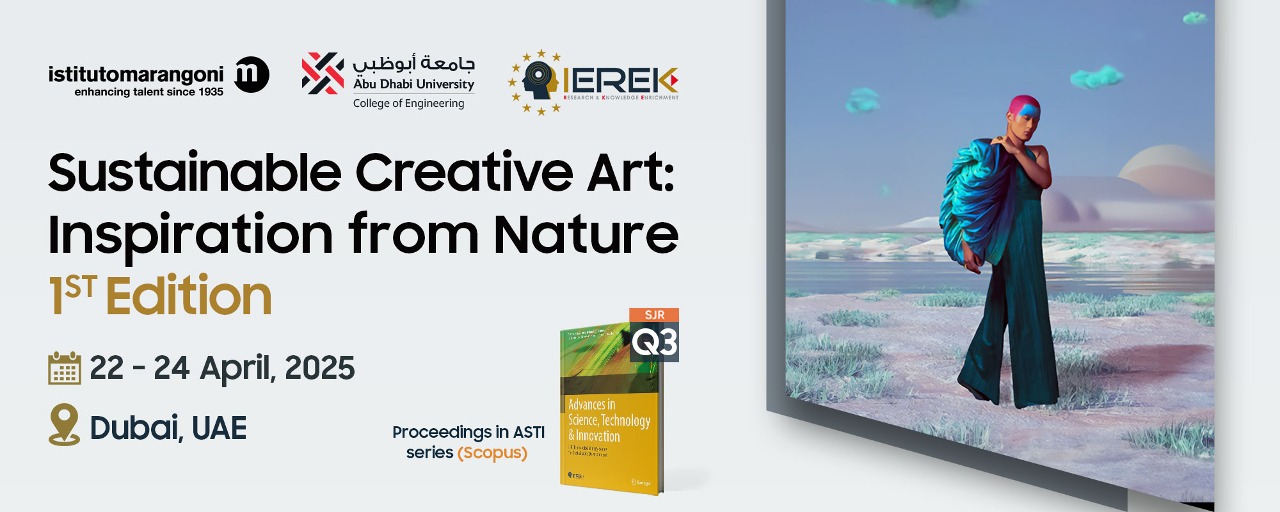

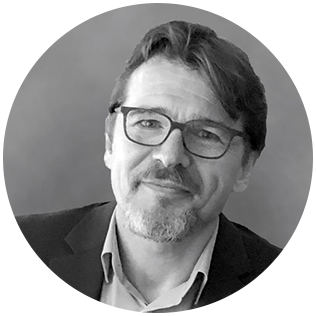
Professor, Program Leader of Interior Design, Head of Research
Istituto Marangoni Dubai – UAE

Associate Professor at the DESTEC Department of the University of Pisa, specializing in Industrial Design (ICAR/13).
Istituto Marangoni Dubai – UAE

Head of Dubai Opera, is a leading cultural leader recognized for his contributions to the arts in the Middle East and beyond
Istituto Marangoni Dubai – UAE
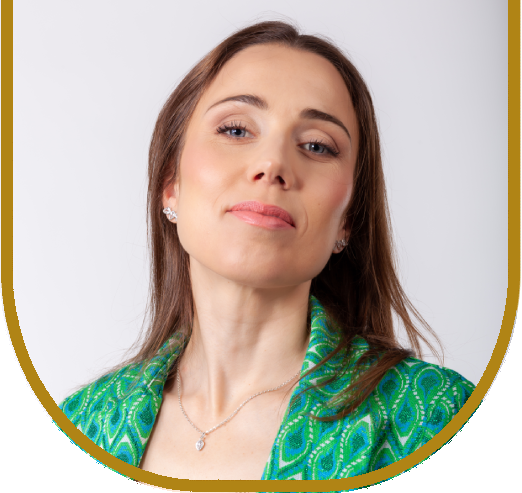
President of the Italian Academy of Biophilia (AIB), is an Environmental Psychologist and a prominent expert in Biophilic Design.
Istituto Marangoni Dubai – UAE
Menna Yasser
Conference Coordinator
(+20) 3 5763827 | (+20) 3 5763828
(+20)1000028021
Subscribe to our newsletter
𝙊𝙫𝙚𝙧𝙫𝙞𝙚𝙬 𝙤𝙛 𝙩𝙝𝙚 𝙁𝙞𝙧𝙨𝙩 𝙀𝙙𝙞𝙩𝙞𝙤𝙣 𝙤𝙛 𝙩𝙝𝙚 𝙄𝙣𝙩𝙚𝙧𝙣𝙖𝙩𝙞𝙤𝙣𝙖𝙡 𝘾𝙤𝙣𝙛𝙚𝙧𝙚𝙣𝙘𝙚 𝙤𝙣 𝙎𝙪𝙨𝙩𝙖𝙞𝙣𝙖𝙗𝙡𝙚 𝘾𝙧𝙚𝙖𝙩𝙞𝙫𝙚 𝘼𝙧𝙩: 𝙄𝙣𝙨𝙥𝙞𝙧𝙖𝙩𝙞𝙤𝙣 𝙛𝙧𝙤𝙢 𝙉𝙖𝙩𝙪𝙧𝙚 (𝙎𝘾𝙄𝙉)
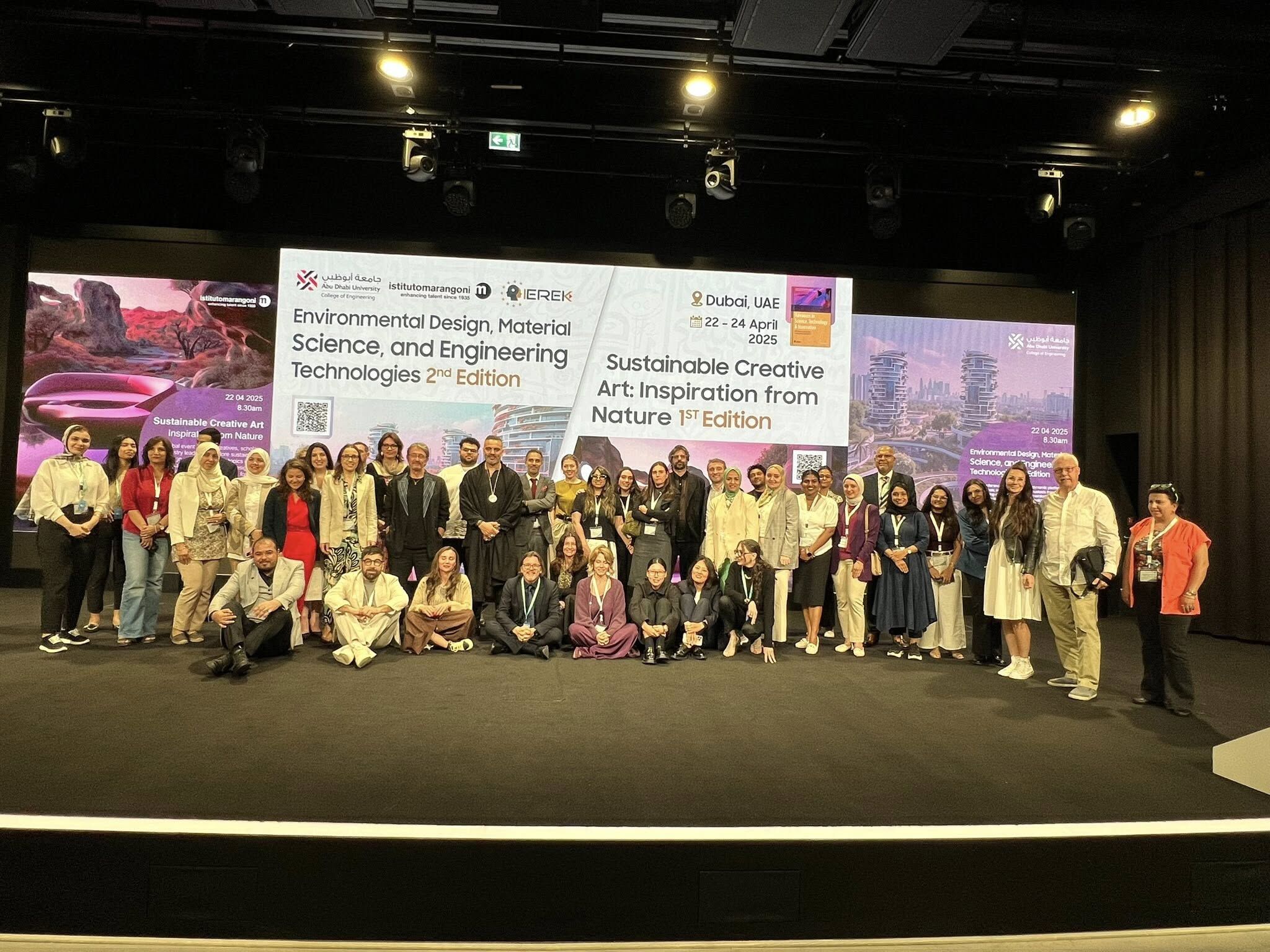
The inaugural International Conference on Sustainable Creative Art: Inspiration from Nature (SCIN) was held from April 22-24, 2025, at Museum of the Future, Dubai . In collaboration with Istituto Marangoni Dubai, The Sustainable Creative Art conference promises towas enriched and enlightening event, was bring academics, pioneers, artists, industry professionals, and enthusiasts to explore the limitless possibilities of sustainable art.
𝐒𝐂𝐈𝐍 𝟐𝟎𝟐𝟓 – 𝐃𝐚𝐲 𝐎𝐧𝐞 𝐇𝐢𝐠𝐡𝐥𝐢𝐠𝐡𝐭𝐬
We’re officially underway! Day one of the 𝐒𝐮𝐬𝐭𝐚𝐢𝐧𝐚𝐛𝐥𝐞 𝐂𝐫𝐞𝐚𝐭𝐢𝐯𝐞 𝐀𝐫𝐭: 𝐈𝐧𝐬𝐩𝐢𝐫𝐚𝐭𝐢𝐨𝐧 𝐟𝐫𝐨𝐦 𝐍𝐚𝐭𝐮𝐫𝐞 (𝐒𝐂𝐈𝐍) conference launched with a powerful and inspiring opening session.
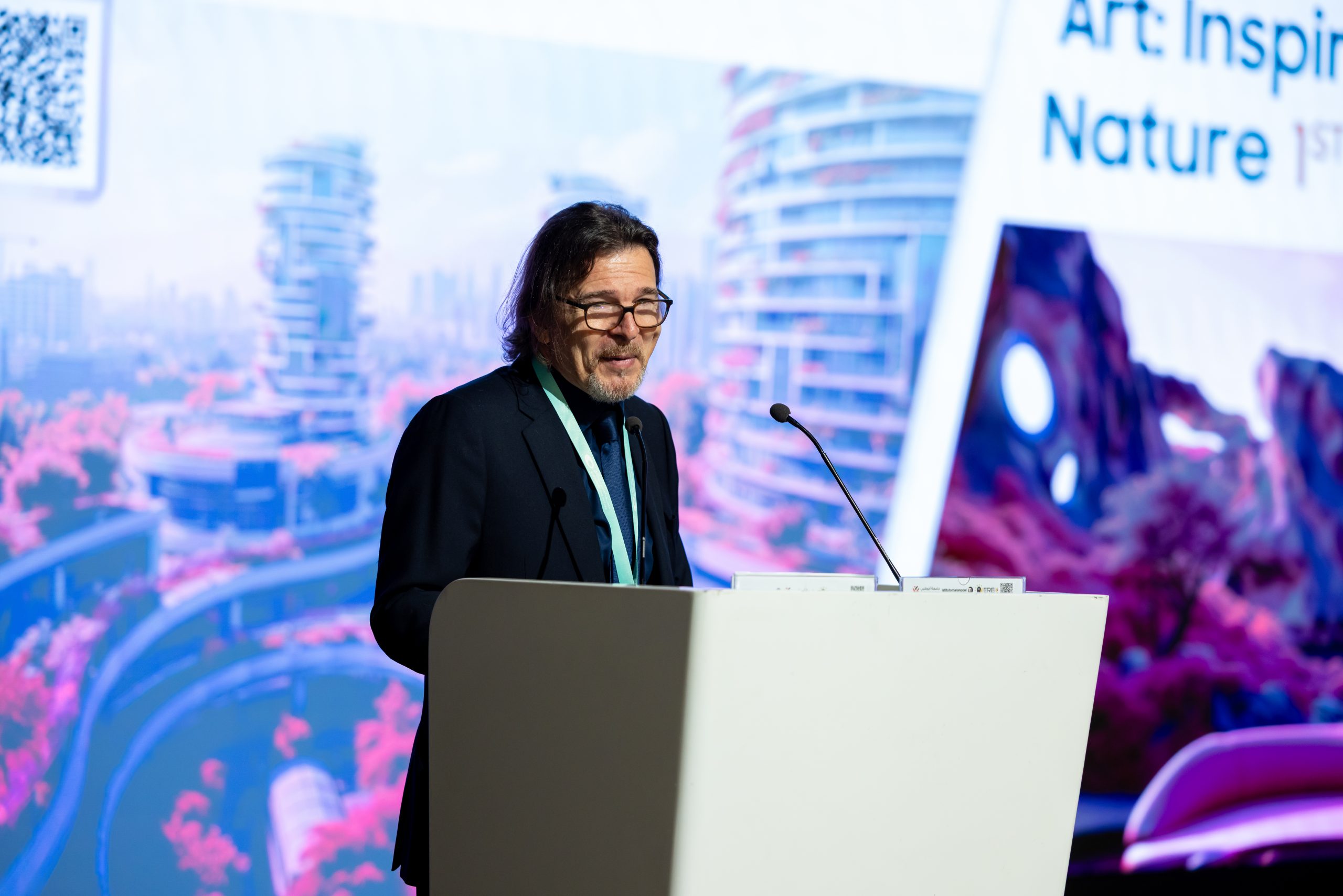
The day began with visionary remarks from our leaders: 𝐃𝐫. 𝐌𝐨𝐡𝐚𝐦𝐞𝐝 𝐄𝐥 𝐊𝐚𝐟𝐭𝐚𝐧𝐠𝐮𝐢,(Abu Dhabi University), 𝐃𝐫. 𝐏𝐚𝐨𝐥𝐨 𝐂𝐚𝐫𝐚𝐭𝐞𝐥𝐥𝐢, SCIN Chair (Istituto Marangoni Dubai), and 𝐏𝐫𝐨𝐟. 𝐅𝐫𝐚𝐧𝐜𝐞𝐬𝐜𝐨 𝐅𝐢𝐨𝐫𝐞𝐭𝐭𝐨, Honorary Chair (Istituto Marangoni HQ).
We were honored by the presence of 𝐇.𝐄. 𝐇𝐚𝐥𝐚 𝐁𝐚𝐝𝐫𝐢, General Director of the Dubai Culture and Arts Authority, who delivered a powerful message on the vital role of culture and design in shaping a sustainable future.
Keynote speakers brought bold ideas and creative insight, featuring renowned voices like 𝐑𝐨𝐬𝐬 𝐋𝐨𝐯𝐞𝐠𝐫𝐨𝐯𝐞, 𝐆𝐢𝐨𝐯𝐚𝐧𝐧𝐢 𝐏𝐮𝐧𝐠𝐞𝐭𝐭𝐢, 𝐚𝐧𝐝 𝐏𝐫𝐨𝐟. 𝐋𝐨𝐫𝐞𝐧𝐳𝐨 𝐈𝐦𝐛𝐞𝐬𝐢, 𝐟𝐨𝐥𝐥𝐨𝐰𝐞𝐝 𝐛𝐲 𝐢𝐦𝐩𝐚𝐜𝐭𝐟𝐮𝐥 𝐬𝐞𝐬𝐬𝐢𝐨𝐧𝐬 𝐟𝐫𝐨𝐦 𝐃𝐫. 𝐒𝐡𝐚𝐦𝐬 𝐍𝐚𝐠𝐚, 𝐃𝐫. 𝐏𝐚𝐨𝐥𝐨 𝐏𝐞𝐭𝐫𝐨𝐜𝐞𝐥𝐥𝐢, 𝐚𝐧𝐝 𝐏𝐫𝐨𝐟. 𝐆𝐚𝐛𝐫𝐢𝐞𝐥𝐞 𝐆𝐨𝐫𝐞𝐭𝐭𝐢.
Then came alive with engaging masterclasses from 𝐋𝐮𝐜𝐚 𝐅𝐢𝐧𝐨𝐭𝐭𝐢, 𝐒𝐨𝐟𝐢𝐚 𝐂𝐫𝐨𝐜𝐢𝐚𝐧𝐢, 𝐒𝐡𝐚𝐡𝐫𝐚𝐦 𝐀𝐠𝐚𝐚𝐣𝐚𝐧𝐢, 𝐑𝐢𝐭𝐚 𝐖𝐡𝐢𝐭𝐞, 𝐏𝐫𝐨𝐟. 𝐄𝐦𝐚𝐧𝐮𝐞𝐥𝐞 𝐍𝐚𝐛𝐨𝐧𝐢, 𝐚𝐧𝐝 𝐀𝐡𝐦𝐞𝐝 𝐅𝐚𝐫𝐢𝐝, each exploring the intersection of creativity, biophilia, emotion, and sustainable storytelling.
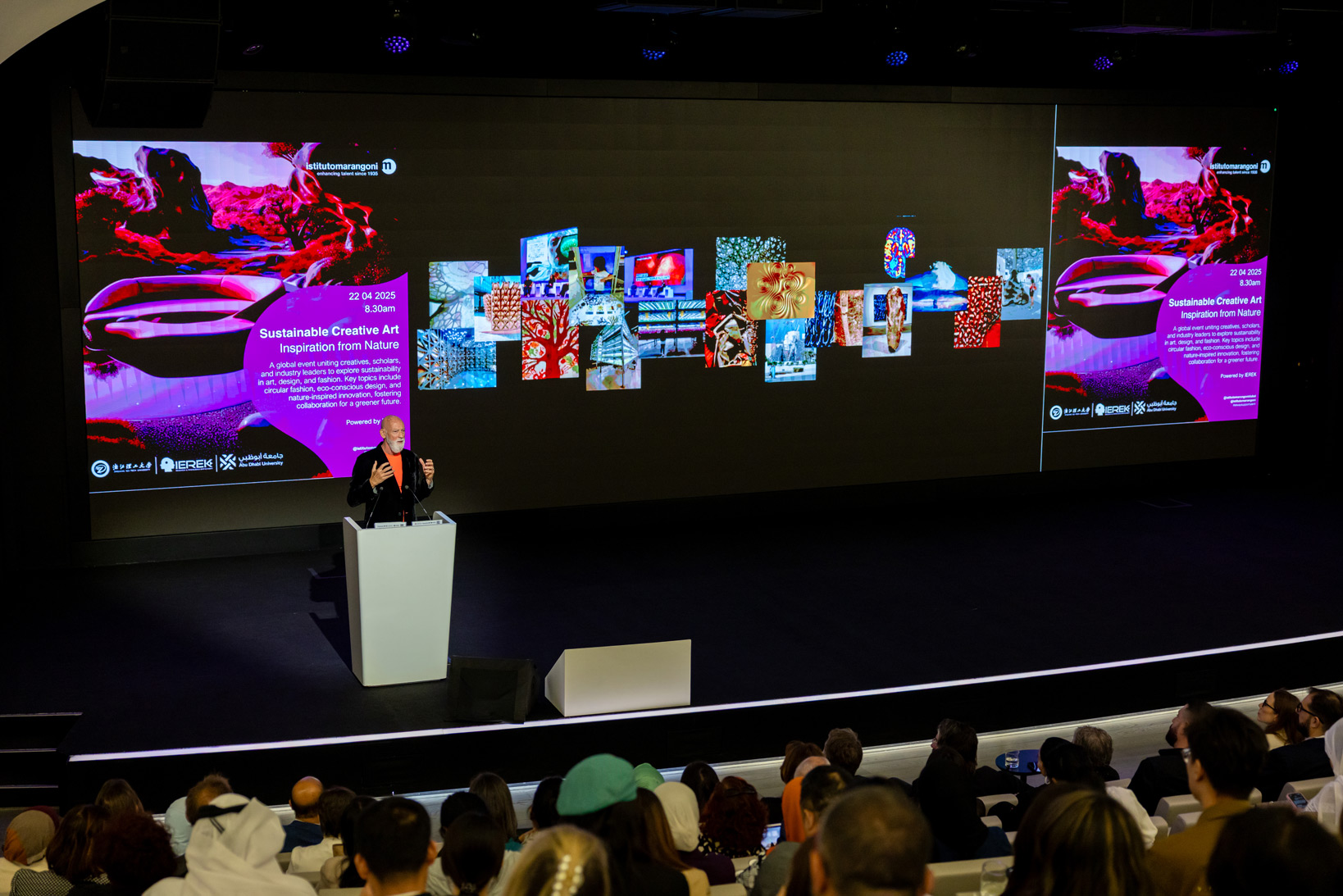
The day concluded with a vibrant group photo, capturing the energy and collaboration that define SCIN conference participation
𝐒𝐂𝐈𝐍 𝟐𝟎𝟐𝟓 – 𝐃𝐚𝐲 𝐓𝐰𝐨 𝐇𝐢𝐠𝐡𝐥𝐢𝐠𝐡𝐭𝐬 ✨🌿
We kicked off Day Two of SCIN 2025 at Abu Dhabi University – Dubai Campus with great energy and inspiring ideas!
The day began with thought-provoking keynote speeches from:
𝑷𝒓𝒐𝒇. 𝑰𝒐𝒂𝒏𝒏𝒊𝒔 𝒁𝒖𝒃𝒖𝒓𝒕𝒊𝒌𝒖𝒅𝒊𝒔
𝑫𝒓. 𝒁𝒂𝒇𝒂𝒓 𝑺𝒂𝒊𝒅
𝑫𝒓. 𝑰𝒉𝒔𝒂𝒏𝒖𝒍𝒍𝒂𝒉 𝑶𝒃𝒂𝒊𝒅𝒖𝒍𝒍𝒂𝒉
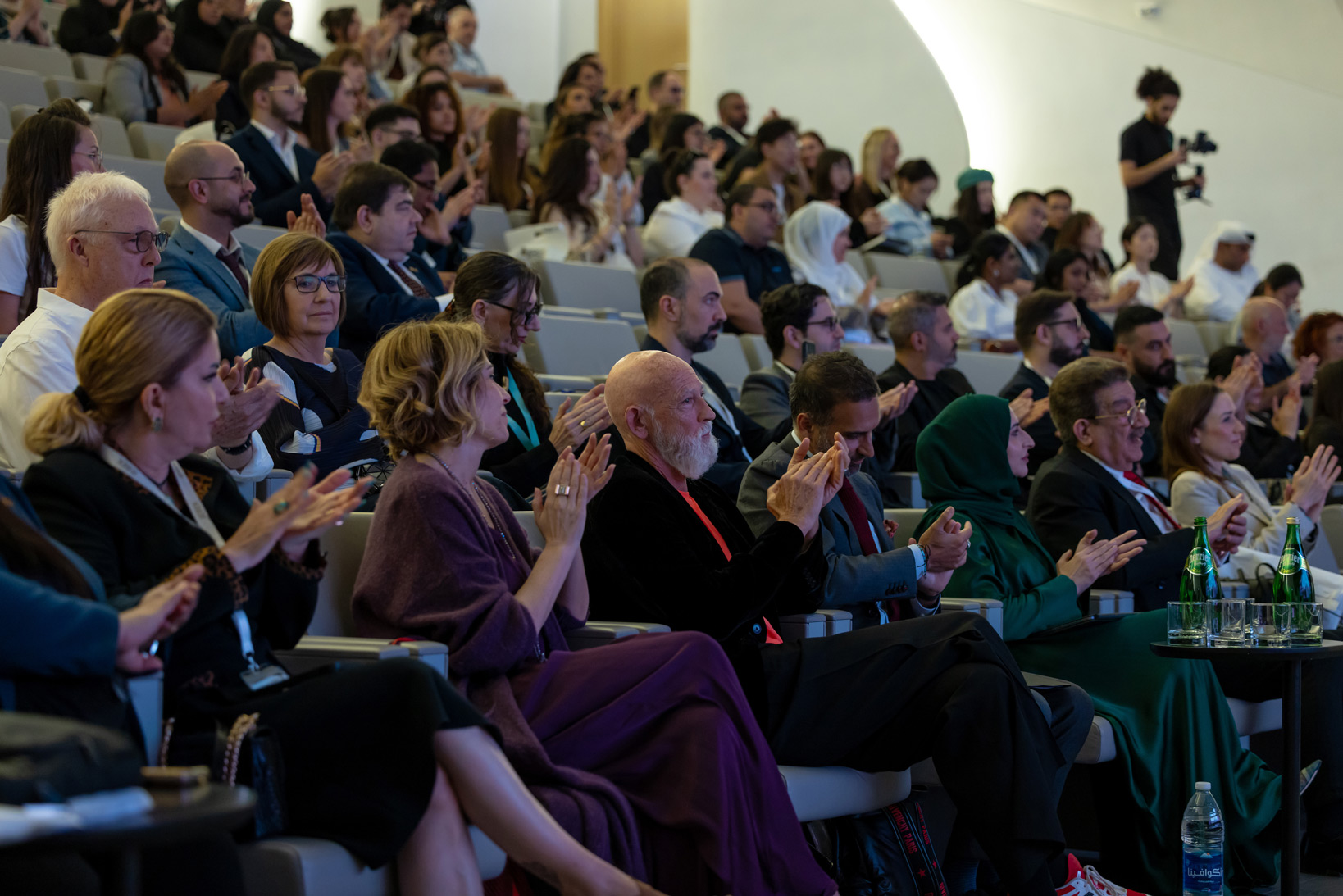
Their talks set the tone for a day filled with innovation, sustainability, and creative exchange.
Following the keynotes, our presentation sessions welcomed both in-person and virtual participants. The sessions featured impressive research, lively discussions, and valuable knowledge sharing. The final discussions showcased a rich exchange of ideas and interdisciplinary experiences.


𝐒𝐂𝐈𝐍 𝐃𝐚𝐲 𝟑 𝐇𝐢𝐠𝐡𝐥𝐢𝐠𝐡𝐭𝐬
The third day of the 𝑺𝑪𝑰𝑵 2025 conference wrapped up with engaging online presentation sessions, where brilliant minds from around the world shared their unique research journeys and insightful findings.

From groundbreaking innovations to interdisciplinary explorations, each presentation sparked lively discussions and meaningful exchanges, making it a truly collaborative and inspiring experience.
A big thank you to all our presenters and participants for bringing such energy and depth to the virtual stage!
𝙎𝘾𝙄𝙉 𝘾𝙡𝙤𝙨𝙞𝙣𝙜
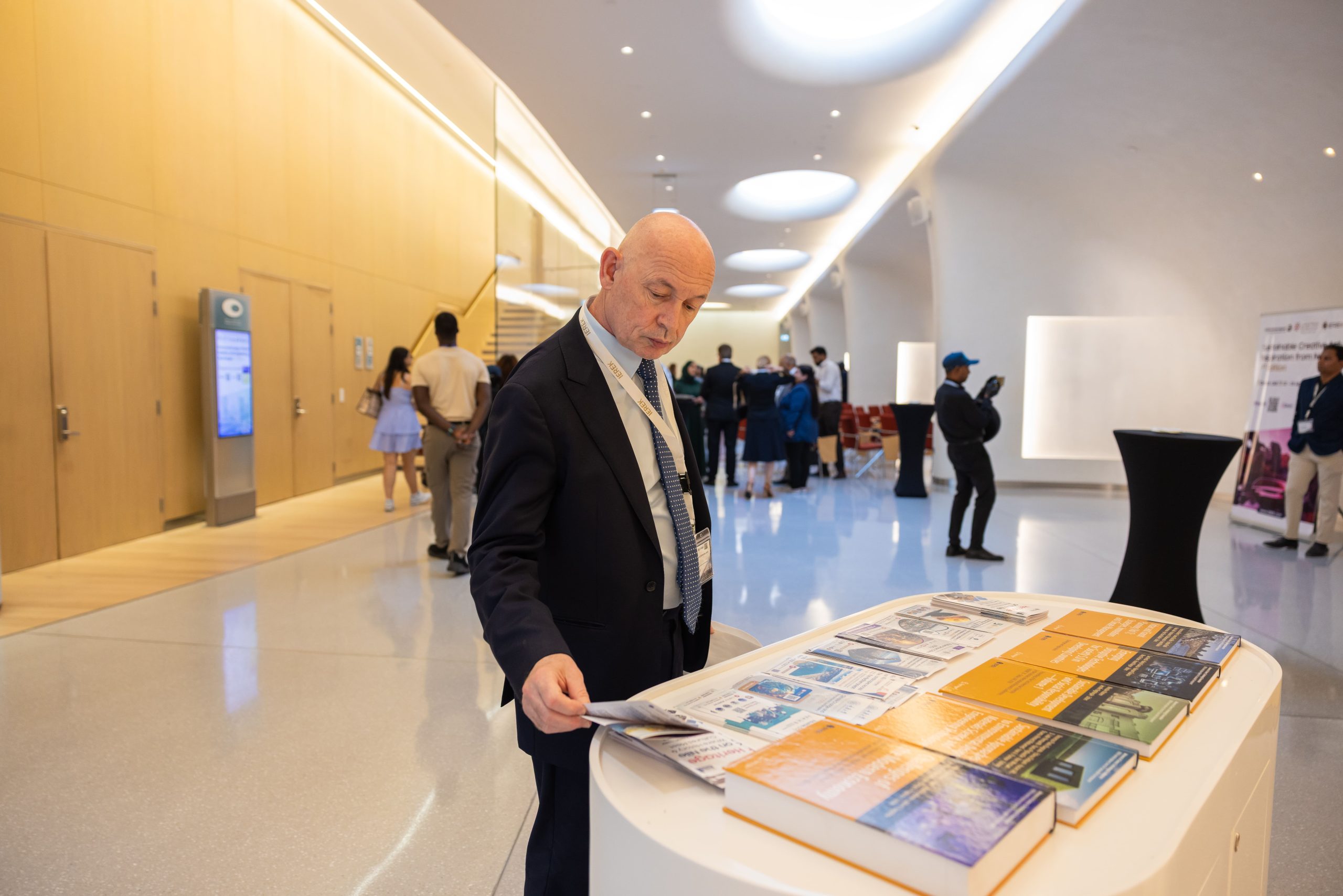
The evening was graced by the presence of distinguished figures in the field:
𝑷𝒓𝒐𝒇. 𝑷𝒂𝒐𝒍𝒐 𝑪𝒂𝒓𝒂𝒕𝒆𝒍𝒍𝒊 – Professor, Program Leader of Interior Design, and Head of Research at Istituto Marangoni Dubai
𝑫𝒓. 𝑴𝒐𝒉𝒂𝒎𝒆𝒅 𝑬𝒍 𝑲𝒂𝒇𝒕𝒂𝒏𝒈𝒖𝒊 – Associate Professor, Department of Architecture and Interior Design, Abu Dhabi University
𝑫𝒓. 𝑴𝒐𝒖𝒓𝒂𝒅 𝑨𝒎𝒆𝒓 – CEO and Founder of IEREK & ASTI’ Series Editor by Springer.
A heartfelt thank you to everyone who contributed to the success of this inspiring event. Here's to more collaborations, innovation, and shared knowledge in the future!
Artists have always found inspiration in the natural world, drawing from its intricate patterns, breathtaking landscapes, and delicate ecosystems. The allure of nature lies in its ability to stir our emotions and remind us of the interdependence of all living creatures, urging us to preserve and safeguard our environment.
Today, we stand witness to a global awakening, as the importance of sustainability takes center stage in our collective consciousness. The urgency to address climate change, protect biodiversity, and adopt eco-friendly practices has never been more evident. Artists possess a unique power to influence and shape societal values. Delegates can create works that not only inspire and engage but also raise awareness and foster a deeper connection with the natural world.
The intersection of art, design, and sustainability could be seen as a catalyst for showcasing the profound influence that nature has on the creative process. There is an inherent beauty in the world around us, and it is through this lens that we seek to explore the boundless possibilities for sustainable art in various domains, including architecture, interior design, graphic design, fashion, photography, advertising, painting, and beyond.
Throughout this conference, we will delve into the innovative approaches employed by artists and creative industries as they embrace sustainability and incorporate nature-inspired elements into their work. Delegates will have the opportunity to explore how architecture can seamlessly blend with the environment, resulting in structures that harmonize with their surroundings while minimizing their ecological footprint. The transformative power of interior design will also be showcased, as spaces are infused with natural elements that promote well-being and sustainability.
The conference will highlight the harmonious coexistence of sustainability and aesthetics within the fields of graphic design and fashion, both of which have a profound impact on our daily lives. Attendees will witness how the fashion industry is leading the way in adopting sustainable practices, from utilizing ethically sourced materials to implementing circular fashion models. Furthermore, photography, painting, and oil drawings will capture the essence of nature's beauty, immortalizing it on canvas and film. Decorative murals will breathe life into urban spaces, infusing them with vibrant colors and motifs inspired by the natural world.
The Sustainable Creative Art conference promises to be an enriching and enlightening event, bringing academics, pioneers, artists, industry professionals, and enthusiasts to explore the limitless possibilities of sustainable art. We invite you to join us in Dubai as we celebrate the beauty of nature and its profound influence on the creative process. By bringing diverse voices and perspectives, the conference will cultivate a global network of artists and scholars dedicated to exploring the potential of sustainable art. It is through this collaboration that we can collectively address the challenges and seize the opportunities presented by the intersection of art, sustainability, and nature.
Furthermore, it is important to note that this conference extends beyond the sessions held at Dubai. It transcends borders and embraces the international community of artists and scholars. We are honored to welcome esteemed representatives from universities worldwide, as they bring their valuable insights and expertise to the event. In addition, renowned fashion designers, well-known.
The conference aims to foster an exchange of ideas, perspectives, and experiences among participants, ultimately enriching their collective understanding of sustainable creative art. It will serve as an enlightening and thought-provoking experience, sparking new ideas, forging connections, and igniting a passion for sustainable creative art inspired by nature.
The Istituto Marangoni in Dubai invites artists, scholars, designers, brands, and all those passionate about sustainable creative art to join us at this prestigious conference in Dubai. Together, let us shape the future of art, design, and sustainability, drawing inspiration from the beauty and wisdom of the natural world.
1.1 Art as Social Commentary: Addressing Environmental Issues through Visual Expression
1.2 Art Therapy and Eco-Wellness: Exploring the Healing Power of Creative Art in Nature
1.3 Public Art for Sustainability: Engaging Communities and Transforming Urban Spaces
1.4 Art and Technology: Exploring the Intersection of Digital Innovation and Creative Expression
1.5 Art Exhibitions for Environmental Awareness: Curating Shows that Inspire Action
1.6 Art Collaboration: Fostering Cross-Disciplinary Partnerships and Collective Creativity
1.7 Environmental Art and Ecological Awareness
1.8 Art and Environmental Activism
2.1 The Role of Creativity in Sustainable Architecture, Eco-friendly, and Efficient Design
2.2 Creativity and Functionality in Architecture, Interior Design, and Adaptive Reuse
2.3 Parametric Design: Algorithms, and Unique Computational Architectural Forms
2.4 Biophilic Design: Enhancing Wellbeing and Connectivity with Nature solution
2.5 Biomimicry: Inspiration from Nature, Innovative Designs, and Sustainable Solutions
2.6 Identity of Place, Creativity in Architectural Design Elements, Interior Spaces, and Cultural
Context
2.7 Intersection of Architecture, Interior Design and Public Art: Creative Installations for Building
the environment
2.8 Responsive and Interactive Architecture: Dynamic and Adaptable Spaces
2.9 Sustainable Lighting Design: Balancing Efficiency and Aesthetics
2.10 Upcycling and Repurposing: Giving New Life to Furniture and Accessories
2.11 Natural Textiles and Flooring: Exploring Renewable and Non-Toxic Materials
2.12 Smart Home Technology: Enhancing Energy Efficiency and Sustainability in Interior Spaces
2.13 Adaptive Reuse and Upcycling in Interior Design
2.14 Wellness and Health-Centric Interior Design
2.15 Indigenous Design and Cultural Sustainability
3.1 Slow Fashion Movement: Embracing Ethical and Sustainable Practices
3.2 Textile Innovation: Exploring Eco-Friendly Fabrics and Dyeing Techniques
3.3 Zero-Waste Fashion Design: Minimizing Material Waste in the Production Process
3.4 Collaborative Design: Engaging Local Artisans and Sustainable Supply Chains
3.5 Fashion as Activism: Using Clothing as a Vehicle for Social and Environmental Change 3.6
Sustainable Fashion Retail: Designing Eco-Friendly Stores and Shopping Experiences
3.7 Biophilic Design and Nature-Inspired Fashion
3.8 Ethical and Fair-Trade Practices in Fashion Design
3.9 Artisanal and Handcrafted Fashion Techniques
3.10 Sustainable Supply Chains: Tracing the Journey of Fashion from Source to Consumer 3.11
Circular Economy in Fashion: Embracing Recycling, Upcycling, and Closed-Loop Systems
3.12 Ethical Fashion: Ensuring Fair Wages, Safe Working Conditions, and Social Responsibility
3.13 Fashion Education for Sustainability: Integrating Sustainable Practices in Design Curricula
3.14 Fashion and Cultural Heritage: Preserving Traditional Crafts and Indigenous Knowledge 3.15
Fashion Retail and Consumer Behavior
3.16 Technology and Innovation in Sustainable Fashion
3.17 Fashion Industry's Role in Climate Action
4.1 Evolution of Fashion Shows as an artistic and expressive platform
4.2 Fashion Show aspects and Production: creating a captivating visual experience
4.3 Fashion Show as Artistic Expression: creativity, innovative designs, and thematic presentation
4.4 Beauty Ideals and Diversity: body types, ethnicities, identities and celebrities on the runway,
promoting inclusivity
4.5 Fashion Show Direction: curating the narrative and visual aesthetic of a show, and ensuring
the impactful presentation
4.6 Impact of Fashion Shows on the Industry and branding
4.7 Sustainable Branding and Marketing in Fashion
4.8 Digital Art and Technology in Fashion Shows
4.9 Fashion and Art Collaboration: Cross-Pollination of Creativity
5.1 Creative communities: the power of a design-driven approach to increase environmental
awareness
5.2 Street Style oriented aesthetics: the bottom-up approach
5.3 Creative Subcultures in extreme environments: impact on fashion, design and styling
5.4 Nature-Inspired Street Art: Celebrating Biodiversity and Ecosystems
5.5 Street Art Activism: Art as a Tool for Environmental Advocacy
5.6 Creative Reuse in Street Art: Upcycling Found Objects and Waste Materials
5.7 Creative Reuse in Fashion: Upcycling Practices
5.8 Biodegradable Graffiti: Innovations in Eco-Conscious Street Art
5.9 Street Art and Community Engagement: Cultivating Local Awareness of Nature
5.10 Cultural Narratives and Nature: Reconnecting Urban Spaces to Environmental Heritage
6.1 The Intersection of Technology and Computer-Aided Creativity
6.2 The Impact of Technological Advancements and Digital Tools on Artistic Expression
6.3 Digital Art and Mixed Media: Interactive installations and digital art forms
6.4 Virtual Reality and Augmented Reality: Creating immersive and interactive artworks
6.5 Generative Art and Algorithms: Generating dynamic and creative process
6.6 Digital Sculpting and 3D Printing: Explore the intersection of technology and sculpture
6.7 Technology, visualization, and infographics engaging visual arts to interactive
6.8 Ethical and Conceptual Considerations: authorship, and originality of artworks
6.9 Blockchain Technology and Sustainable Art Marketplaces
6.10 Biomimicry in Product Design
6.11 Circular Product Design: Reducing Waste Through Creativity
6.12 Material Innovation: Sustainable Alternatives Inspired by Nature
6.13 Designing for Longevity: Timeless Products Inspired by Nature’s Durability
6.14 Sustainable Packaging Design: Eco-Friendly Solutions in Product Development
6.15 Functional Aesthetics: Merging Beauty and Sustainability in Product Design
6.16 Cradle-to-Cradle Product Design: Designing for a Regenerative Future
6.17 Localized and Bioregional Design: Tailoring Products to Natural Ecosystems
6.18 User-Centered Design with a Focus on Environmental Impact
7.1 Emotional & Sustainable Brand Storytelling
7.2 Sustainable Branding: Designing Eco-Conscious Identities & Green Digital Marketing
Strategies
7.3 Cause Marketing Strategies: Promoting Sustainable Products, Services & NGO Campaigns
7.4 Art Direction: New Aesthetic Languages and Style for Sustainable Advertising and
Environmental Awareness
7.5 Use of Social Media for Environmental Awareness: Mobilizing Online Communities
7.6 Use of Digital Design for Environmental Activism: Mobilizing Audiences for Change
7.7 Use of Sustainable Websites and Apps: User Experience (UX) and User Interface (UI) Design
7.8 Interactive Communication: Engaging Audiences in Eco-Friendly Experiences
7.9 Typography New Sustainable Frontiers
7.10 Ethical Design in Advertising and Packaging Production: Choosing Recyclable and FSC- Certified Materials
8.1 Fashion Photography: Capturing Style, Aesthetics, and Global Trends
8.2 Cinematic Fashion: The Art of Fashion Film
8.3 Sustainable Fashion Photography: Promoting Eco-Friendly and Ethical Practices
8.4 Artistic Expression in Fashion Photography and Styling
8.5 Macro and Composite Photography: Showcasing Intricate Textures and Conceptual Imagery
8.6 Fashion Photography as Social Commentary
8.7 Cinematography in Fashion Film: Lighting, Composition, and Visual Aesthetics
8.8 Creative Direction in Fashion Film: Storytelling, Atmosphere, and Emotion
8.9 Fashion Film Production: Logistics and Collaboration
8.10 Technological Advancements and Post-Production in Fashion Film
9.1. Market Trends and Competitive Advantage.
9.2. Innovative Advertising Techniques.
9.3. Creative Problem-Solving and Decision-Making.
9.4. Sustainable Marketing Strategies.
9.5. Storytelling in Brand Identity.
9.6. Digital and Social Media Innovations.
9.7. International Marketing and Business Innovations.
9.8. Sustainable Economic Models and Green Growth.
9.9. Climate Change and Global Economics.
9.10. Economic Policies for Environmental Conservation.
9.11. Advancing Creativity in the Workplace.
9.12. Human Resource Management and Creativity.
9.13. Chatbot Integration in Marketing.
9.14. Creative Leadership and Organizational Management.
9.15. Creative risk management solutions.
9.16. Emerging Trends in Financial Services.
9.17. Innovative Funding Models for Startups.
9.18. Financial Planning for Small Businesses.
The Opening Ceremony: Museum of the Future (MOTF) (Click for Map Location)
Located in the financial district of Dubai and founded by the Dubai Future Foundation, the Museum of the Future is an impressive testament to Dubai's innovative spirit and commitment to pushing the boundaries of human imagination. The Museum of the Future stands in the heart of the city as a symbol of technological advancement and an indication of the limitless possibilities that lie ahead.
The design of the Museum of the Future in Dubai is a true architectural marvel that blends innovation, sustainability, and artistic brilliance. Owning one of the most complex structures in the world, the Museum of the Future was designed by Killa Design and engineered by Buro Happold. It does not end there too; the building has attained the LEED Platinum certification in terms of its green rating, which is a monumental step toward its goal of meeting sustainability standards.
The exterior surface of the building is made up of windows that form Arabic quotes said by Dubai's ruler about the emirate's future. The phrases written on the Dubai Museum of the Future are quotes from Sheikh Mohammed bin Rashid Al Maktoum, Vice President and Prime Minister of the United Arab Emirates in intricate geometric patterns that reflect the rich cultural heritage of the region.
The building possesses a structure with a unique shape, similar to a torus or a circular loop, which symbolizes the endless possibilities of the future. The museum's exterior is surrounded by sustainable technologies, such as photovoltaic panels and smart glass, which not only enhance the building's energy efficiency but also create a visually captivating display of light and color.
Inside, the museum's open and flexible spaces allow for immersive exhibits and interactive installations to take center stage, creating an environment that encourages exploration and engagement. The use of advanced materials and digital technologies further enhances the visitor experience, blurring the boundaries between the physical and virtual worlds. Every aspect of the design has been meticulously crafted to inspire wonder, provoke curiosity, and ignite the imagination of visitors as they look at the limitless possibilities of the future.
The main goal of the museum is to be the first to look to the future of humanity, rather than the past. It is predicted that everything in the museum will be present and functional in the year 2071.
It features seven floors in total, with five floors dedicated to different exhibits based on different themes. The visitor journey begins from the fifth floor and takes guests down to every other floor.
The journey starts from the Fifth Floor titled “Orbital Space Station (OSS) Hope”. The theme of this floor focuses on life in space in the year 2071 and explores all the ways how the future of space travel can help humanity.
Then it moves to the fourth floor titled “The HEAL Institute,” which highlights the themes of ecology and biodiversity in the future, where visitors can focus on repairing, restoring, and renewing life on Earth for the future.
The third floor titled “Al Waha,” -which is Arabic for 'the oasis- is where visitors can experience different therapies on this floor to help them connect with their senses to stay focused and grounded.
The second floor “Tomorrow, Today,”-where the opening ceremonies of both our conferences Environmental Design, Material Science, and Engineering Technologies (EDMSET) - 2nd Edition and Sustainable Creative Art: Inspiration from Nature (SCIN) will be held- highlights technology and innovative concepts, addressing present solutions in response to global challenges. This floor also reflects the museum's work with its strategic partners as it acts as an incubator and laboratory for global caution.
Then comes the first and final floor “Future Heroes.” This floor is dedicated to children under the age of 10. It offers interactive activities, hands-on play and reward-based challenges to encourage collaboration and creativity.
The museum enjoys a prime location that is easily accessible to residents, tourists, and professionals from around the world. Surrounded by towering skyscrapers, world-class hotels, and cultural landmarks, the museum becomes an integral part of Dubai's iconic skyline. Its central location ensures that it is close to major transportation hubs, making it convenient for visitors to reach by metro, bus, or taxi. The museum's location also offers amazing views of the cityscape, providing a stunning background for the exploration of future possibilities. With its strategic positioning, the Museum of the Future becomes a captivating destination that integrates into Dubai's urban fabric and invites people from all walks of life to witness the limitless potential of human ingenuity.
The infrastructure of the Museum of the Future in Dubai is proof of the city's commitment to technological innovation and sustainability. The building is equipped with state-of-the-art infrastructure to support its advanced exhibits and interactive installations. The museum's infrastructure includes high-speed internet connectivity, allowing for the smooth integration of digital technologies and immersive experiences. The building is designed to be energy-efficient, with smart lighting systems, optimized ventilation, and sustainable materials used in its construction. The infrastructure also incorporates advanced security systems to ensure the safety of visitors and the protection of valuable exhibits. Additionally, the Museum of the Future is equipped with modern facilities such as spacious galleries, research labs, conference rooms, and auditoriums to accommodate a wide range of activities and events. The infrastructure not only supports the museum's daily operations but also provides a flexible and adaptable space for future advancements in technology and exhibition design. With its unique infrastructure, the Museum of the Future sets a new standard for sustainable and technologically advanced museum architecture.
Conference Sessions: American University in the Emirates (Click for Map Location)
The American University in the Emirates (AUE) is one of the most rapidly growing universities in the United Arab Emirates. Why do so many students want to study here? This is because AUE offers an American curriculum, taught by highly regarded faculty, who seek to engage our students in excellent learning experiences.
AUE offers students accredited undergraduate, graduate, and professional programs within in its seven Colleges and numerous Institutes and Centers, which encourage you to become proactive, reflective and critical thinkers and researchers. AUE students learn to become part of a fully engaged community, whose members are taught to become the next leaders within their professions, both locally and internationally.
-The registration fee does not cover accommodation or travel expenses. A list of accommodation options can be suggested by our team if available. Please contact [email protected] for inquiries.
-The Fees do not include the VAT. A 5% VAT are applicable to the conference fees.
We recommend that all authors take advantage of the benefits that IEREK offers, including various attendance types, publishing opportunities, and opportunities for discounts and waivers.
IEREK offers many types of registrations that are diverse in registration fees; applicants can choose the type they are familiar with as follows:
Participants who are PhD holders, post-doctoral researchers, and universities’ affiliated professors and experts in the field.
Must provide proof of enrollment in a university by providing an enrollment certificate and/or a valid university ID (with issue/expiry date) etc.
Participants who are not affiliated with universities such as practitioners, policymakers, entrepreneurs, etc.
Have access to the event to enjoy the discussions, coffee breaks, and lunch as a co-author or audience.
An author may need to attend the conference for presentation only to present a research idea without publication or full paper submission; the fee in this case will be decreased.
| Type of Registration | Regular Payment Deadline Till 31 Jan 2025 |
Late Payment Deadline Till 15 Feb 2025 |
|---|---|---|
| Attendee / Audience | 200 € | 300 € |
| Guest Speaker / Professional Speaker | 600 € | 800 € |
1- The creative case study: This is an amazing opportunity for all business owners, professors, students, and those passionate about creative innovation to showcase their projects. It also gives them to display all their talents. To learn more click here.
2- Jury of Young Architects: This is a prime opportunity for emerging architects to join our hiring jury and engage in a platform that fosters collaboration and inspires future architectural leaders. To learn more click here.
3- This valuable opportunity gathers pioneers, business owners, keynote speakers, hiring agencies, and more to exchange knowledge and experiences, aiming to gain the most benefit from the conference.
4- We welcome the participation of all keynote speakers at the conference. Keynote speakers from various fields are invited, including those from design firms, film production companies, recruitment agencies, real estate companies, diverse brands, and more.
5- The fees include: a certificate, lunch and coffee break and Full entry to all presentations, panel discussions, and workshops during the opening day at the Museum of the Future.
The opening fee covers:
| Type of Registration | Regular Payment Deadline 31 Jan 2025 |
Late Payment Deadline 28 Feb 2025 |
|---|---|---|
| Scopus indexed-ASTI Book by Springer | ||
| Student | 350 € | 400 € |
| Academic / Professional | 400 € | 450 € |
| Co-author/ Audience | 250 € | 300 € |
| Open Access IEREK Press Journals | ||
| Student | 300 € | 350 € |
| Academic / Professional | 350 € | 400 € |
| Co-author/ Audience | 250 € | 300 € |
The physical fee covers:
If multiple abstracts are submitted by the same first author submitted to the conference, a 25% discount is applied to each additional submission.
Each research paper should have one main author who should pay the full fee (Author fees) regardless of attendance. Co-authors, each, have their own fees to pay to attend the event. This applies to online attendance as well as physical attendance.
A research paper fee allows only one author, whether main or co-author, to attend the conference and receive only one copy of the conference Abstract book in both hard and soft copies. Extras can be requested for an additional fee.
Students must provide proof of enrollment in a university by providing an enrollment certificate or a valid university ID (with issue/ expiry date) etc.
Additionally, you have the option to present your submitted abstract as a presentation without the intention of publishing your work, for information about the fees and additional details, please feel free to get in touch with us at: [email protected].
| Type of Registration | Regular Payment Deadline 31 Jan 2025 |
Late Payment Deadline 28 Feb 2025 |
|---|---|---|
| Scopus indexed-ASTI Book by Springer | ||
| Student | 300 € | 350 € |
| Academic/Professional | 350 € | 400 € |
| Co-author/ Audience | 150 € | 200 € |
| Open Access IEREK Press Journals | ||
| Student | 250 € | 300 € |
| Academic/ Professional | 300 € | 350 € |
| Co-author/ Audience | 150 € | 200 € |
A softcopy of the abstracts book and/ or hard copy (excluding shipping)
IEREK Participation/ Contribution Certificate in softcopy
Acceptance Letters in softcopy
Consideration for publishing in the IEREK ASTI series by Springer or IEREK Press
Access to conference recordings
|
*Authors may request that their kits be delivered, for an additional fee decided by the courier, and upon request. Alternatively, authors located in Egypt can pick them up from Cairo/ Alexandria office. *Gala Dinner, social programs, and other activities. |
|
|
Additional Conference Kit (Excluding Delivery) *Contact us for a quotation on shipping fees. |
100 € |
Payment Methods
Payment of the registration fee can be made via the following methods (only after online registration):
1. Bank Transfer
***PLEASE NOTE that a 5% VAT will be applied on the conference fees***
Option 1
Account name: Publishing Direct Conferences CO. LLC
Bank Name: Emirates NBD
Swift code: EBILAEADXXX
Account in Euro: AE090260001025884084202
Account in Dirhams: AE980260001015884084201
Option 2
Bank Account Name/ Beneficiary name: IEREK
Beneficiary (IEREK) Address:11 Behera St. Janaklis, Abu Qir, Alexandria, Egypt
Bank Account (EUR): 100023143822
IBAN: EG730010005600000100023143822
SWIFT/BIC: CIBEEGCX044
Bank Name: Commercial International Bank (CIB) – Egypt S.A.E
Bank Address: 649 EL Horreya Rd, Janaklis, Elraml, Alexandria, Egypt
postcode: 21141
VAT ID: 463-523-873
Reason for Transaction: “EDMSET 2025 Participation”
NOTES:
*** Please note that a 5% VAT will be applied on the conference fees***
*** Please note that the transaction fee is solely the payee’s/ Remitter’s responsibility. The beneficiary
should receive the total amount specified above without deductions. Incomplete amounts may result in
an outstanding amount and a request for completion***
*** After you have completed the payment, kindly inform us with full transaction details. The
transaction will remain marked as pending until we receive confirmation. After you make your
transfer, kindly send us a scanned copy of the receipt to [email protected] and cc
[email protected] ***
2. Online payment gateway (PayPal/Stripe)
Participants who would like to complete their payments online must send a request to the conference coordinator/ email and CC [email protected] to receive a customized link to complete their payments.
3. Cash in IEREK branches
Payment in person can be arranged. Please contact the conference coordinator/ Email to receive further information.
Payment Terms and Guidelines:
Read more on Important Dates. For information on payment dates, kindly send a request to the conference coordinator/email and CC [email protected] to receive payment details to complete the payment.
Authors who have registered and completed payment for virtual attendance CAN request a change to physical attendance. However, a change from physical to virtual is NOT possible.
After online registration and payment, the registration fee cannot be reimbursed.
Final Acceptance/ rejection of your full/ extended paper (if submitted) can only be given after the peer review process.
Inclusion in the conference program, acceptance letters issuance and consideration for publication must be preceded by registration and payment completion.
Online Payment (only) should only be completed once a proforma invoice is issued with respective instructions for successful payment.
Contact our Financial Department for inquiries/ requests.
| Title | Date |
|---|---|
| Abstract Submission Deadline | 22 Jan 2025 |
| Last Notification for Abstract Acceptance & Approval to present | 31 Jan 2025 |
| Regular Payment Deadline | 31 Jan 2025 |
| Late Payment Deadline | 28 Feb 2025 |
| Full Paper Submission Deadline | 28 Feb 2025 |
| Notification of acceptance/ rejection of submitted full paper | 14 Mar 2025 |
| Conference Program | 08 Apr 2025 |
| Conference Launch | 22 Apr 2025 |
All accepted submissions to the conference, after a rigorous double-blinded peer-review process by the respective and a highly-extinguished Editorial Board, will be published in one of the following:
 Advances in Science, Technology and Innovation (ASTI), an IEREK Interdisciplinary book series published by Springer Nature. (Scopus indexed)
Advances in Science, Technology and Innovation (ASTI), an IEREK Interdisciplinary book series published by Springer Nature. (Scopus indexed) About ASTI
Advances in Science, Technology & Innovation (ASTI) is a series of peer-reviewed books based on important emerging research that redefines the current disciplinary boundaries in science, technology and innovation (STI) in order to develop integrated concepts for sustainable development. It not only discusses the progress made towards securing more resources, allocating smarter solutions, and rebalancing the relationship between nature and people, but also provides in-depth insights from comprehensive research that addresses the 17 sustainable development goals (SDGs) as set out by the UN for 2030.
The series draws on the best research papers from various IEREK and other international conferences to promote the creation and development of viable solutions for a sustainable future and a positive societal transformation with the help of integrated and innovative science-based approaches. Including interdisciplinary contributions, it presents innovative approaches and highlights how they can best support both economic and sustainable development, through better use of data, more effective institutions, and global, local and individual action, for the welfare of all societies. The series particularly features conceptual and empirical contributions from various interrelated fields of science, technology and innovation, with an emphasis on digital transformation, that focus on providing practical solutions to ensure food, water and energy security to achieve the SDGs. It also presents new case studies offering concrete examples of how to resolve sustainable urbanization and environmental issues in different regions of the world. Read More.
The ASTI series is fully indexed in Scopus and any chapter/ paper published as part of this series will be seen on the Scopus database. Some titles have been successfully indexed or submitted for indexation in Web of Science (ISI).
 IEREK Press Journals, a multidisciplinary publisher that aims to cultivate and disseminate research.
IEREK Press Journals, a multidisciplinary publisher that aims to cultivate and disseminate research.
ESSD is a peer-reviewed, scholarly journal that aims to systematically develop the research-driven curiosity and evidence-based discourse of aspiring scholars that seek to contribute to the academic community. As the world is currently living in an age of information where sources are widely available on the Internet, we at ESSD seek to efficiently utilize the available information to help create robust and evidence-based knowledge. In the process, we offer researchers, in general, and young and aspiring ones in particular a quicker way to get their work published and gain exposure through online open access. We pride ourselves on getting submitted work to be published quickly, through the use of our worldwide pool of subject specialist peer reviewers. Find out more about ESSD International Journal here.

ARChive is an open-access journal that publishes conference proceedings on a wide range of topics relating to social sciences. Consequently, it accepts original research papers on a wide spectrum of subjects. ARChive is a journal published on behalf of researchers that perpetually make an effort to contribute to their fields and provide them with high visibility of research submitted. The series publishes, both, theoretical and experimental high-quality papers of current and perpetual interest. It serves to cultivate, propagate, and essentially archive academic research that has been authored and submitted for academic conferences.
Find out more about ARChive International Journal here.

Resourceedings is an open access journal that publishes conference proceedings. Conference proceedings compromise of different disciplines, ranging from Engineering including built environments, architecture, and sustainability. Disciplines also include Technology and Energy. Resourceedings is a journal that publishes research articles that shed light on different crucial issues in order to provide them with solutions and suggestions. The journal publishes articles submitted by researchers of interest in different fields.
Find out more about Resourceedings International Journal here.
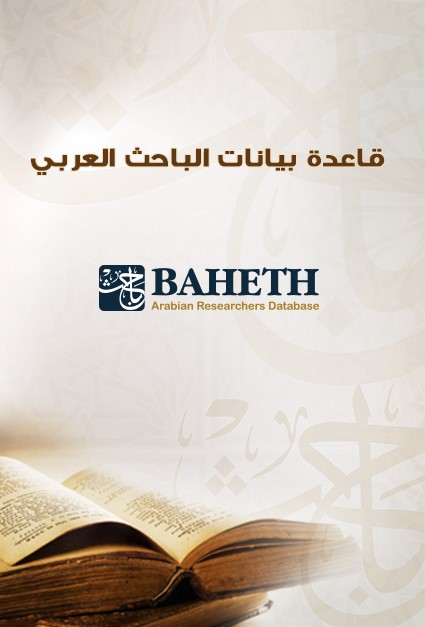
“BAHETH” in Architecture, Engineering, and Technology, is a peer-reviewed journal that publishes original academic research in the fields of Architecture, Engineering, and Technology. The journal welcomes research in the Arabic Language with an English Abstract. Papers submitted to this journal in Arabic must be presented in the English Language in the conference.
Find out more about BAHETH International Journal here.
Attending a conference dramatically enhances both your professional and personal development. They help you sharpen the saw, meet and converse with industry experts, expand your resources and grow your professional network. IEREK Conference will help you:
1. Open Discussions: We bring together leading academic scientists, from different universities and countries, to exchange and share their experiences and research results.
2. Internationally Accredited Certificate: The participants are granted internationally recognized certificates acknowledged by IEREK, the University, and Partnering Organizations.
3. Publication: Selected high-quality manuscripts will be published, after peer review, in the Advances in Science, Technology & Innovation (ASTI) book series by Springer or by IEREK Press Journals, both of which are indexed in world-renowned databases.
4. Research Technologies: Conferences can expand your resources by providing a great opportunity to promote gathered information on new technologies related to your research.
5. Networking: You can engage with industry experts to discuss with them the very latest research projects they could be working on and increase your chances of collaboration in future projects.
6. Academic Reputation: Attending many conferences will make you a known figure in academic circles and an active member of the academic community.
IEREK has an unyielding policy regarding plagiarism. We believe that copying/taking the ideas and work of other Authors without permission and credit is fraudulent. The Reviewing committee and IEREK employees have the authority to reject a paper during its reviewing process, based on the paper being subjected to either minor or major plagiarism.
Authors must refer to, and abide by, the following instructions in submitting their abstracts/ papers:
This is not a prerequisite for presenting your work at the conference. Meaning, you can present your submitted abstract without intending to publish your work.
This process can only be initiated after payment completion and confirmation:
Registration
To help the organizers plan for inter-disciplinary dialogue, participants are requested to choose from the Conference themes/ Topics upon registration.
They must also refer to, and abide by, the following instructions in registering and/ or submitting their contributions:
NOTE: If you are contributing as an Author of a submitted abstract (for publishing consideration and/or presentation), and regardless of attendance, the fee for the registration is the same. See and Conference Fees for more information.
Types of Participation
1. Attend/ Present in-person or Online and Publish in indexed Conference proceedings
The conference offers a Physical attendance option for your convenience. That said, participants will have a chance to present their abstract/research, on campus, and have their work considered for publication in the ASTI Series by Springer as part of the conference proceedings.
See Author Instructions and Conference Fees for more information.
2. Registration to publish in the proceedings without presenting/ attending
If your full paper is accepted, it may be published in the conference proceedings book in the Advances in Science, Technology & Innovation Book Series by Springer (indexed in Scopus) even if you are not attending the conference. In this case, the accepted work will not be included in the final conference program. See Author Instructions and Publishing Opportunities for more information.
3. Non-presenting participant
Non-presenting participants may also wish to attend the conference as Audience Members or Co-authors contributing to an already submitted abstract/ paper. See Conference Fees for more information.
Notes to consider:
* Attendance online and in-person are possible upon confirmation with the conference secretariat/ coordinator at [email protected] and following Conference Fees covered.
* The participation fee is uninform for all options presented above.
* For participants wishing to attend in-person, a visa invitation letter will be provided upon request, for which case a copy of your passport will be required. The invitation letter can only be provided after acceptance and full payment.
* Before planning your trip, be sure to check travel restrictions to the conference’s hosting country. Visit travel information and restrictions, and send in your questions if you have any to the conference coordinator at the email [email protected]

Istituto Marangoni
Istituto Marangoni, with over 85 years of history, has been a global leader in nurturing talent in fashion, art, and design. Known for its "Italianness" that embodies luxury, craftsmanship, and elegance, the institute operates in prestigious locations like Milano, London, Paris, and Shanghai, offering a unique international study experience to over 4,000 students from 107 countries. Its modern and industry-focused curricula, supported by expert tutors and partnerships with top companies, empower students to excel in design, communication, and management. Dedicated to fostering creativity and innovation, the institute continually adapts its programs to meet evolving global demands, making it a hub for cultural exchange and professional development in fashion, art, and desig.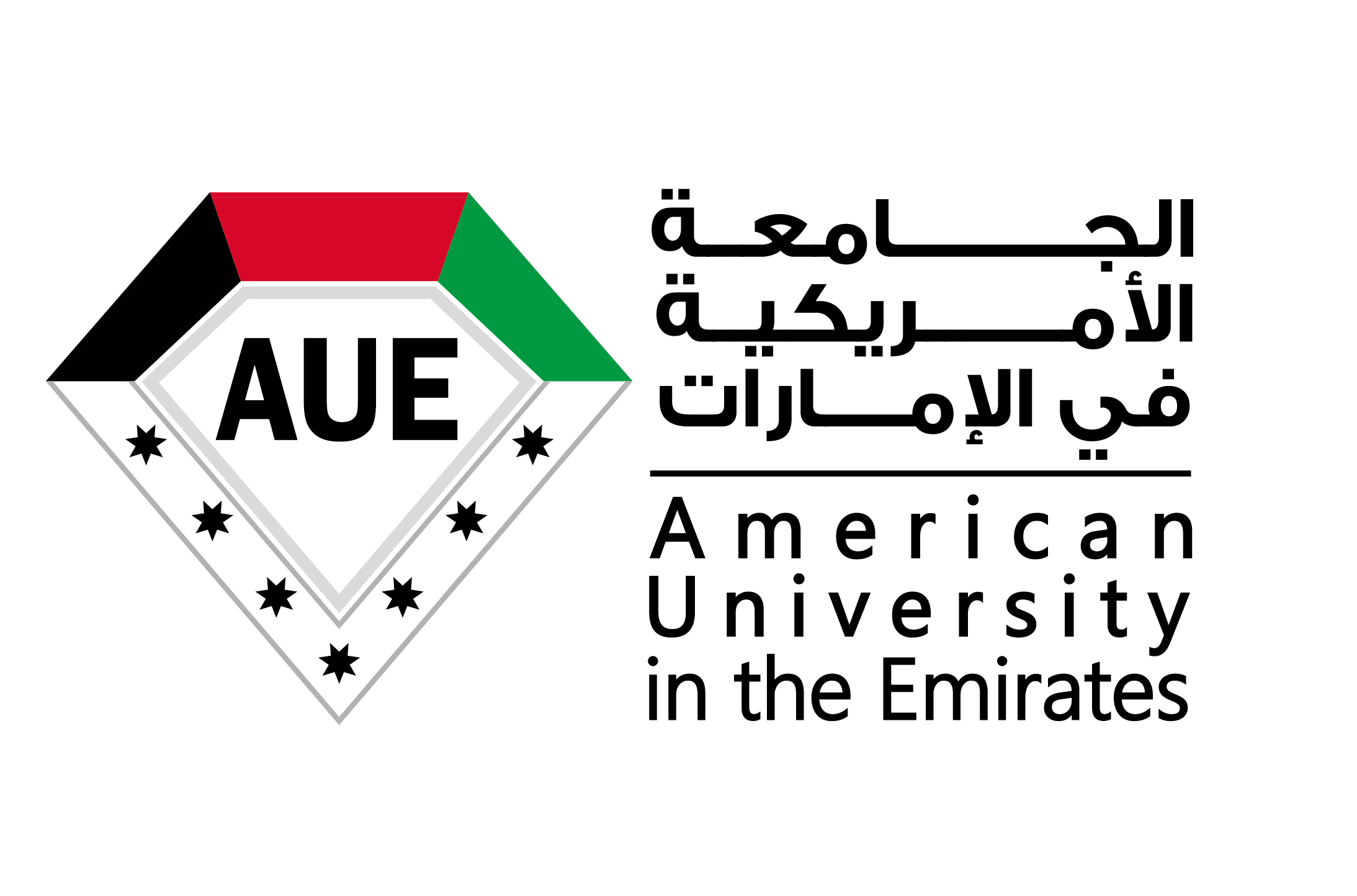
The American University in the Emirates
The American University in the Emirates was established in 2006 in Dubai, UAE, with a vision to provide quality education and foster a culture of academic excellence in the region. Since its inception, AUE has rapidly grown, offering diverse undergraduate and graduate programs across various disciplines. The university is known for its commitment to integrating modern education with the rich cultural heritage of the UAE, preparing students to meet the challenges of a globalized world. Over the years, AUE has built a reputation for its innovative teaching methods, state-of-the-art facilities, and a strong focus on research and community engagement, making it a leading institution in the Middle East.
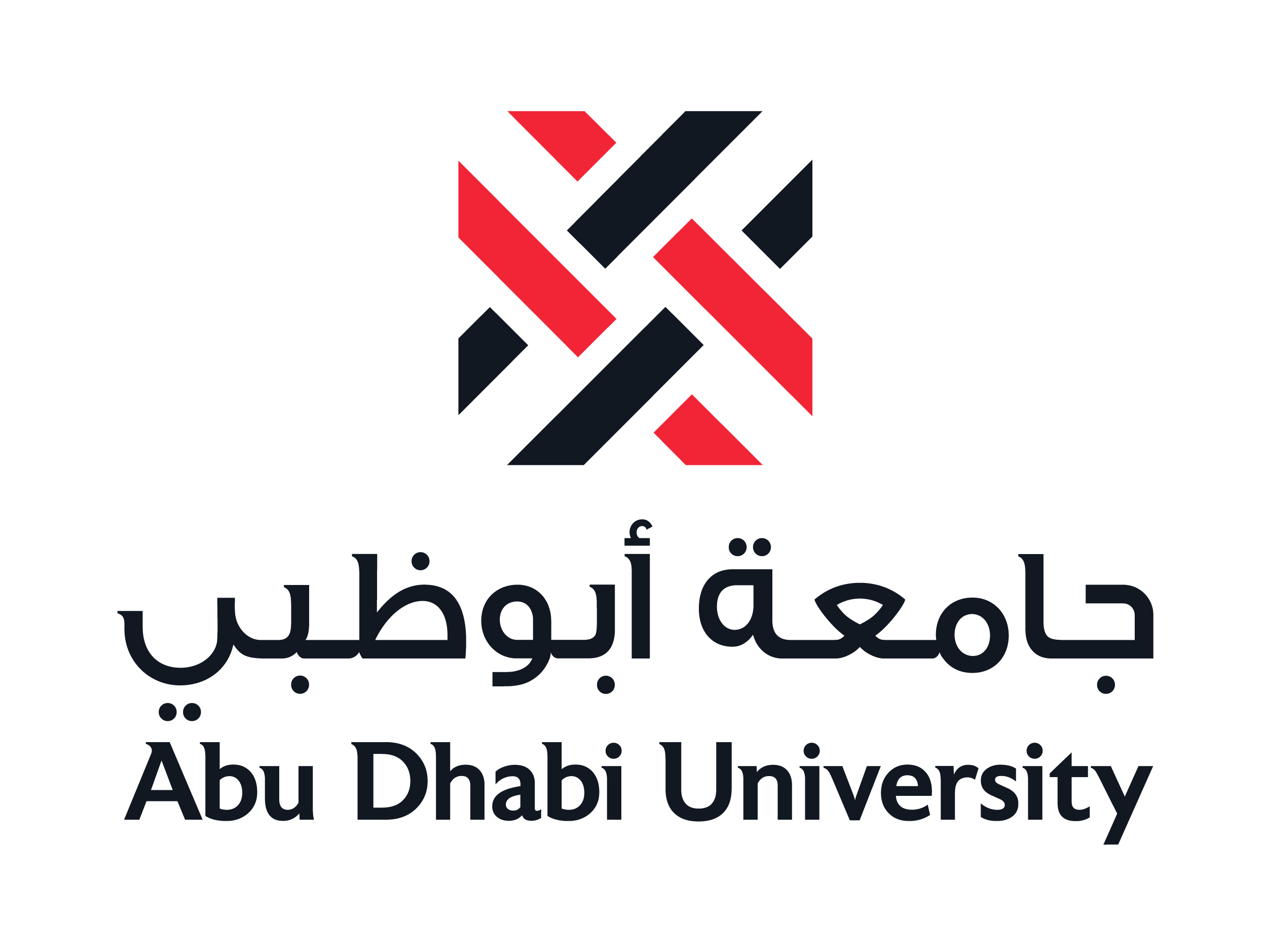
Abu Dhabi University
Abu Dhabi University (ADU), the largest private university in the UAE, is a leading academic institution ranked among the top 3 in the country and within the top 200 universities globally by the Times Higher Education World University Rankings 2025. Established in 2003, ADU offers over 50 internationally accredited undergraduate and postgraduate programs through five colleges across campuses in Abu Dhabi, Al Ain, Dubai, and Dubai Knowledge Park. Known for its faculty and student diversity, with over 8,000 students from nearly 100 nationalities, ADU excels in teaching, impactful research, and alignment with the UAE’s national agenda. Its programs span arts, law, education, business, engineering, and science, including training for UAE Armed Forces personnel, fostering academic excellence and global readiness.

Zhejiang Sci-tech University
Zhejiang Sci-Tech University (ZSTU) is a key provincial institution with a history dating back to 1897. Originally founded as the Silkworm School, it has evolved into a comprehensive university with strengths in engineering, sciences, arts, and management. ZSTU offers a wide range of undergraduate and graduate programs, including doctoral degrees. The university boasts advanced research facilities, a distinguished faculty, and strong international collaborations with over 100 institutions worldwide. With a legacy of over 120 years, ZSTU continues its commitment to academic excellence and innovation.
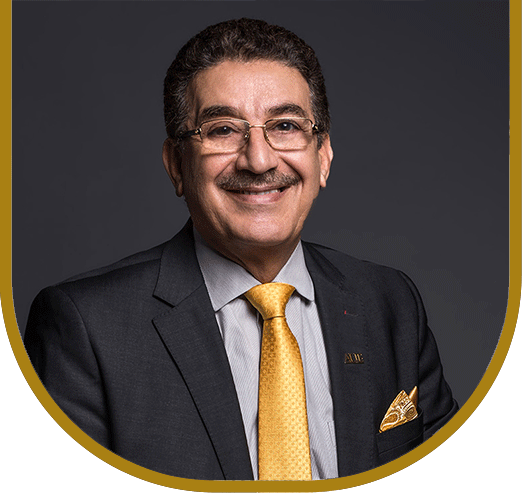
Professor Muthanna Abdul Razzaq holds a Bachelor's degree in Business Administration and Accounting from Al Mustansirya University, a Postgraduate Diploma in Cost Accounting from Baghdad University, and a Ph.D. in Management Accounting from the University of Manchester (UMIST).
He began his career with the Ministry of Irrigation and later transitioned to academia, joining Baghdad University as a faculty member and Vice President for Financial Affairs. In 1997, he became Acting Chair of the Accounting Department at the College of Business Administration, Applied Science University, Amman, Jordan. He then served as Deputy Dean of the Faculty of Business Administration at Ajman University of Science and Technology in the UAE.
A dedicated advocate for quality education, Prof. Razzaq has served on the boards of several higher education institutions, including the American University in Afghanistan and the University of Business and Technology in Saudi Arabia.

Gabriele Goretti is Associate Professor at the DESTEC Department of the University of Pisa, specializing in Industrial Design (ICAR/13).
His research focuses on design innovation for high-end manufacturing districts. He teaches courses on design fundamentals, circular economy, and interior design in the Industrial Design Engineering Bachelor's program.
In 2021, he was a visiting professor at La Sapienza University in Rome, lecturing on design-driven innovation for high-end manufacturing and wearable technologies.
In 2022, he became a visiting professor at Politecnico di Milano, exploring wearable tech in relation to Italy’s fashion districts, conducting interviews with key figures in design, production, and distribution.
From 2020 to 2023, Goretti served as Associate Professor at Jiangnan University, China. Earlier, he was Associate Professor at Nanjing University (2018-2020). From 2007 to 2018, he was a research fellow at the University of Florence’s DIDA Department. From 2014 to 2018 Fashion Coordinator at IED Florence.

Paolo Petrocelli has established himself as one of the leading cultural leaders of his generation on the international scene.
As Head of Dubai Opera, he plays a key role in developing the performing arts in the Middle East and beyond. Dr. Petrocelli has not only promoted artistic excellence and brought world-class performances to the Region but has also actively fostered a sense of belonging and appreciation for diverse cultures, spearheaded initiatives to promote accessibility, inclusivity, and education in the arts.
Paolo Petrocelli has been recognized as a Young Global Leader by the World Economic Forum for continued contributions to arts and culture and selected by the think tank Friends of Europe among the 40 most influential young personalities in Europe and nominated European Young Leader.
He has been recognized by Arabian Business as one of the top 30 leaders under 40 in the Middle East and named by Fast Company as one of the most creative personalities in the Middle East.

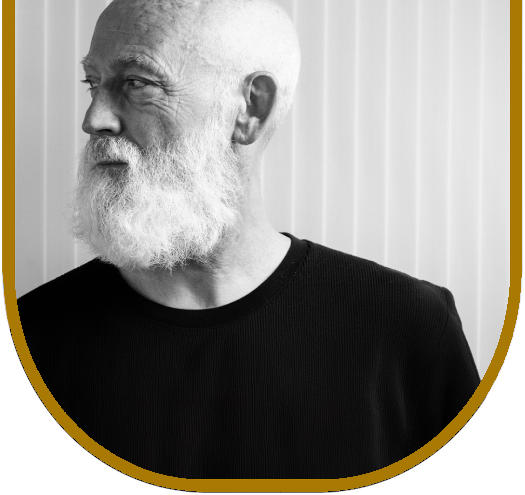
Born 1958, Ross Lovegrove graduated from Manchester Polytechnic with 1st Class BA Hons Industrial design in 1980 and took a Master of Design at the Royal College of Art, London in 1983. In the early 80’s worked as a designer for Frog Design in West Germany on tech projects for companies like Sony and Apple; he later moved to Paris as a consultant to Knoll International, for which he created the highly successful Alessandri Office System.
Invited to join the Atelier de Nimes in 1984, alongside with Jean Nouvel and Phillipe Stark, he consulted amongst others: Cacharel, Louis Vuitton, Hermes and Dupont. Returning to London in 1986 he has since worked on projects for Airbus Industries, Kartell, Ceccotti, Cappellini, Moroso, Luceplan, Driade, Peugeot, Apple, Issey Miyake, Vitra, Motorola, Biomega, LVMH, Narciso Rodriguez, Yamagiwa, Tag Heuer, Swarovski, Herman Miller, Artemide, Renault, Japan Airlines, Toyo Ito Architects, Kenzo, Valextra, GH Mumm, LG, F1, Samsung and KEF.
Winner of numerous international awards his work has been extensively published and exhibited internationally including the Museum of Modern Art in New York, the Guggenheim Museum NY, Axis Centre Japan, Pompidou Centre, Paris and the Design Museum, London, when in 1993 he curated the first permanent Design collection. His work is held in permanent collections of various design museums around the world including the Museum of Modern Art in New York (MOMA), the Design Museum in London, the Vitra Design Museum, in Basel, the Die Neue Sammlung, in Munich and the Centre Pompidou, in Paris.
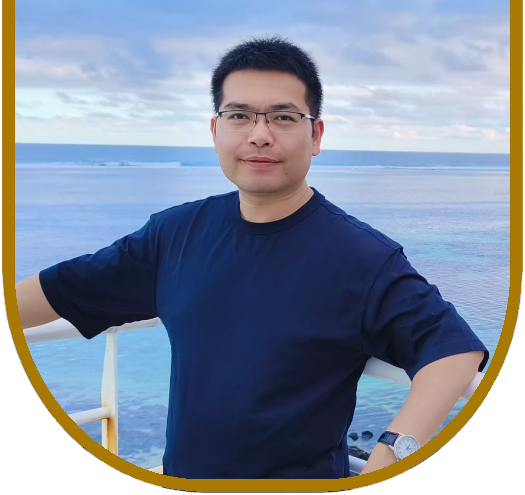
Dr. Zheng Liu is professor and dean of Internation Institute of Fashion Technology, Fashion design college of Istituto marangoni, Zhejiang Sci-Tech University. He also is the deputy director of Key Laboratory of Silk Culture Inheriting and Products Design Digital Technology, Ministry of Culture and Tourism, P.R.China.
He has been engaged in 19 years of professional fashion education and research work in universities, and has worked as a visiting scholar for 13 months at UNT in the United States. He is the leading figure in the field of Fashion Design and Engineering at the college. His research focuses on the application of digital technology, particularly AI, in fashion design and presentation. This includes digital innovative design of traditional textiles, AGCI for design of fabrics and garments, 3D virtual fitting of clothing, and video generation.
He cooperated with the fashion industry to complete many innovative projects of product research and development, improve design efficiency and product quality, and won the Science and Technology Award of China Textile Industry Federation.

Dr. Shams Naga is the Founder and Principal of NAGA, an architecture and engineering firm with offices across the UAE, Saudi Arabia, Egypt, US, and Canada. He also spearheads the DHB Group, focused on real estate developments in the UAE and KSA. Dr. Naga holds a Master’s in Environmental Design from Alexandria University and two additional Master’s degrees in City and Regional Planning and Architecture Theory from Rutgers University and the University of Pennsylvania, where he also earned a PhD. He has held professorships in the US, Egypt, and the UAE.
Dr Naga is a visionary leader with unparalleled expertise in creating timeless designs, effective and efficient spaces and vibrant communities. He has a distinguished track record in real estate development, architecture, engineering, and project management serving clients such as Emaar, Nakheel, Omniyat, The National Housing Company (KSA), Roshn, Red Sea Global and several other prominent players in the real estate sectors in UAE, KSA and other parts of the region. He also serves as an advisor to governmental ministries and departments, making him a sought-after expert in complex real estate challenges. His innovative leadership has made NAGA Architects a leading firm in the industry that has won several awards and accolades over the years. Dr. Naga has been featured in Construction Week’s Power 100 and as one of the Top Ten Designers & Architects in the region for the past 3 years.

Recruitment and Hiring Jury Job Fair
We invite fresh graduate young architects worldwide to attend our fair, which would be a chance for students to show off their graduation projects. Graduates can attend to present their work in a special session titled “Creativity of Young Architects", the session moderators and those attending would act as a jury for these graduation projects, as throughout the session, the projects will be exposed to various design firms, and consultancy offices in the Gulf area.
This event emphasizes the focus on the creative talents of young architects and their role in shaping the future of architecture and urban landscapes. It is also a unique opportunity for design, construction, and consultation firms to easily find the most qualified architects to join their firms.
The event is a part of the international conference on Sustainable Creative Art: Inspiration from Nature (SCIN) that will be held at the Museum of the Future in Dubai on the 22nd of April 2025. This event aims to be a platform for collaboration, learning, and networking for architects that transcends boundaries and inspires the next generation of architectural visionaries.
A few of the best international architects, consultant offices, design firms, and real estate development companies are set to attend the conference. The conference will work as a meeting place for the brightest minds who have a hand in shaping the future of architecture.
To download the poster, Click here.
This is a fantastic opportunity for business owners, professors, students, and those passionate about creative innovation to showcase their projects at the upcoming conference. Students, professors, and business owners are encouraged to share the most engaging case studies, research, and creative work.
At the conference, the projects will be viewed by various business institutes and design firms, greatly increasing the chances of recognition and potential opportunities.
Case studies allow attendees to demonstrate the results that the brands, products, or services can deliver to real clients. They provide evidence for what you promise and address the questions customers may have.
Join the showcase to explore the world of creativity across various fields. From artistic expression in Art, Fashion Design, and Architecture, to innovative designs in Mural Art, Interior Design, and Graphic Design. Discover how creativity transforms Advertising, e-Marketing, Photography, Music, Jewelry-making, and the dynamic processes of Cinematography, Direction, and Film Production.
Showcasing work not only earns acknowledgment for innovative contributions but also opens doors for career advancement and collaboration.
Don't miss out on the chance to display your talents, network with influential figures, and explore new pathways for growth and career development.
Khalifa Tower
The khalifa Tower is the tallest building in the world and a global icon. Truly a feat of engineering, the building represents the conceptual heart and soul of the city of Dubai.
At 828m tall, this magnificent structure is located next to Dubai Mall and has drawn visitors from all over the world since opening in 2010. The unmatched Burj Khalifa view can be taken in from not one but two observations decks – the two-storey at the top on the 124th and 125th floors, as well as one of the world’s highest observation decks (555m) on the 148th floor.
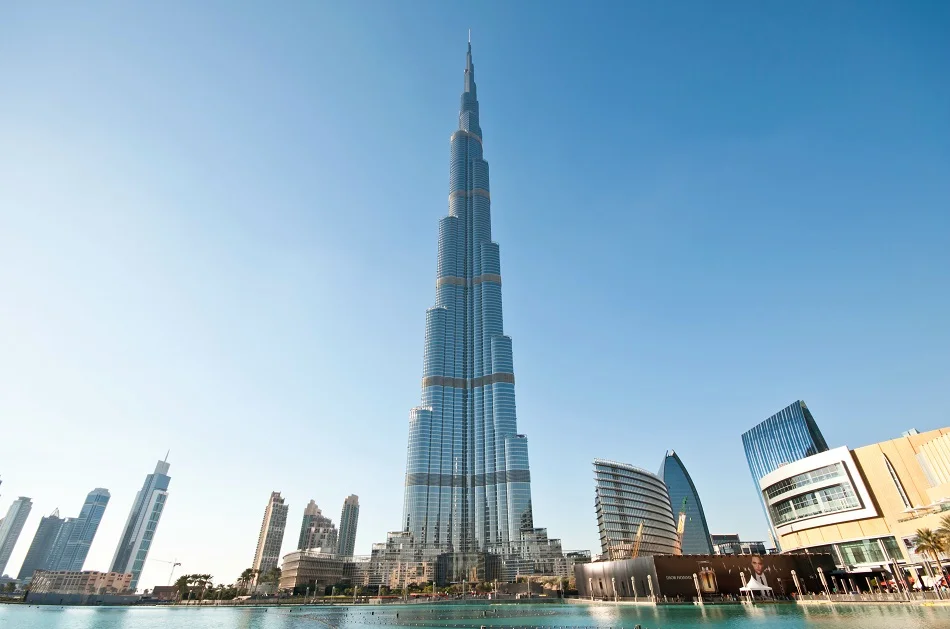
Al Fahidi Historical Neighborhood
Learn about the traditional lifestyle that has been prevalent in Dubai since the mid-nineteenth century by visiting the historic Al Fahidi neighborhood. This neighborhood is located along the Dubai Creek and is considered one of the most prominent heritage sites in the city.
Traditional wind towers are built from coral stone, teak, plaster, sandalwood and palm trunks and represent only a small part of the history of the Al Fahidi neighbourhood. Every path and corridor in this neighborhood tells stories dating back to the era that preceded the union of the seven emirates.
Al Fahidi neighborhood includes a wide range of cultural activities, museums, art galleries, events and traditional restaurants Check out Dubai's events calendar to discover the most amazing activities taking place in the Al Fahidi neighbourhood, most notably the Sikka Art Fair and Heritage Week.
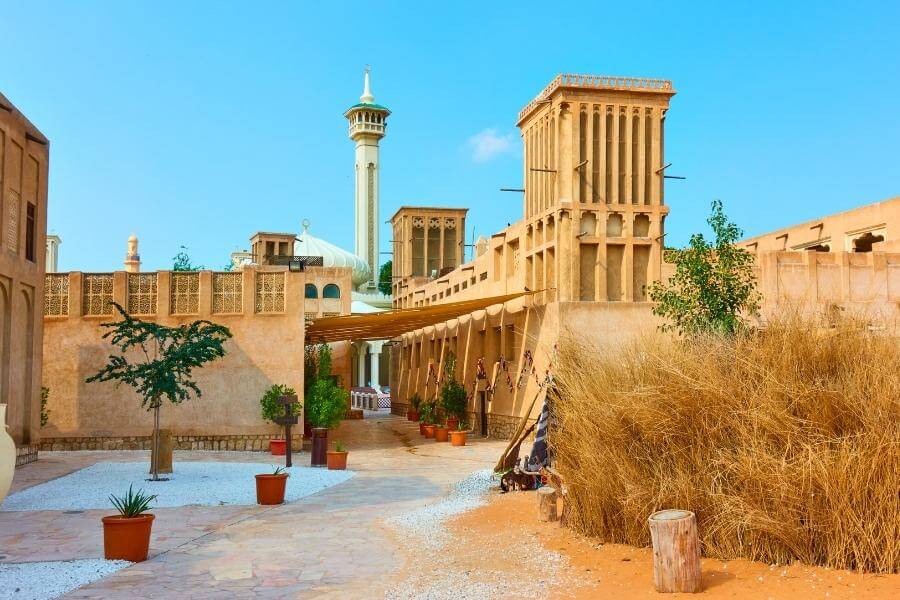
History walk in old Dubai
Follow in the footsteps of Dubai's former inhabitants. This culture-themed walking tour will take you to Al Fahidi Historical Neighborhood and Dubai Creek. What you need to know before you start:
Starting point : Al Fahidi Street in Bur Dubai
Ending point: Radisson Blu Hotel Dubai Deira Creek
Estimated duration: Three to five hours
Best walking time: Morning and afternoon
Directions to starting point: Easiest to Al Fahidi Historical Neighborhood You can go by taxi. You can call a taxi from the roadside or reserve a taxi by calling +971 4 208 0808.
Landmarks: Arabian Tea House, SMCCU, XVA Gallery, Textile Souk, Gold Souk, Spice Souk, Radisson Blu Hotel Dubai Deira Creek, Al Shindagha
Important tips:
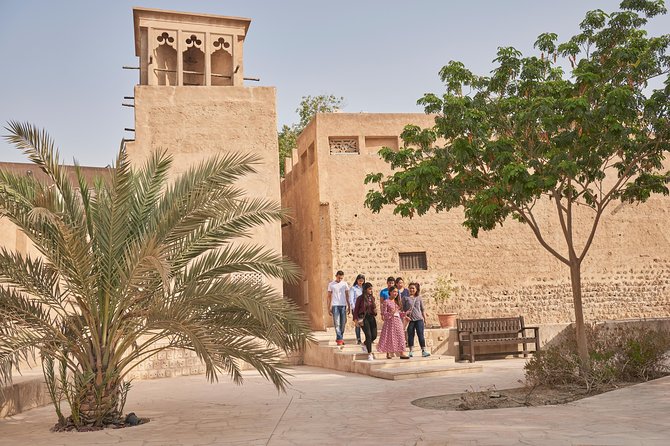
The Dubai Fountain
Choreographed to music, the Dubai Fountain shoots water as high as 500 feet –that’s as high as a 50-story building. Designed by creators of the Fountains of Bellagio in Vegas, Dubai Fountain Performances occur daily on the 30-acre Burj Khalifa Lake.
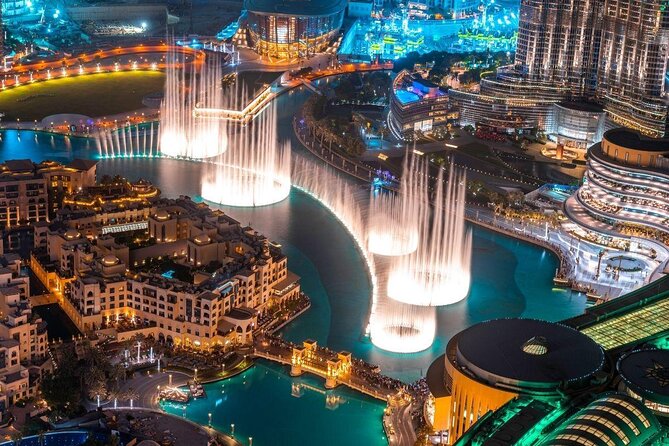
Burj Al Arab Hotel
Burj Al Arab Hotel is one of the finest and most luxurious hotels in the world. It is located in Dubai in the artificial island 280 meters from the seashore, with a height of only sixty meters less than the Empire State Building in New York City in the United States of America , with its towering height rivaling the tallest buildings in the world. The hotel is connected to the mainland by a special curved bridge.
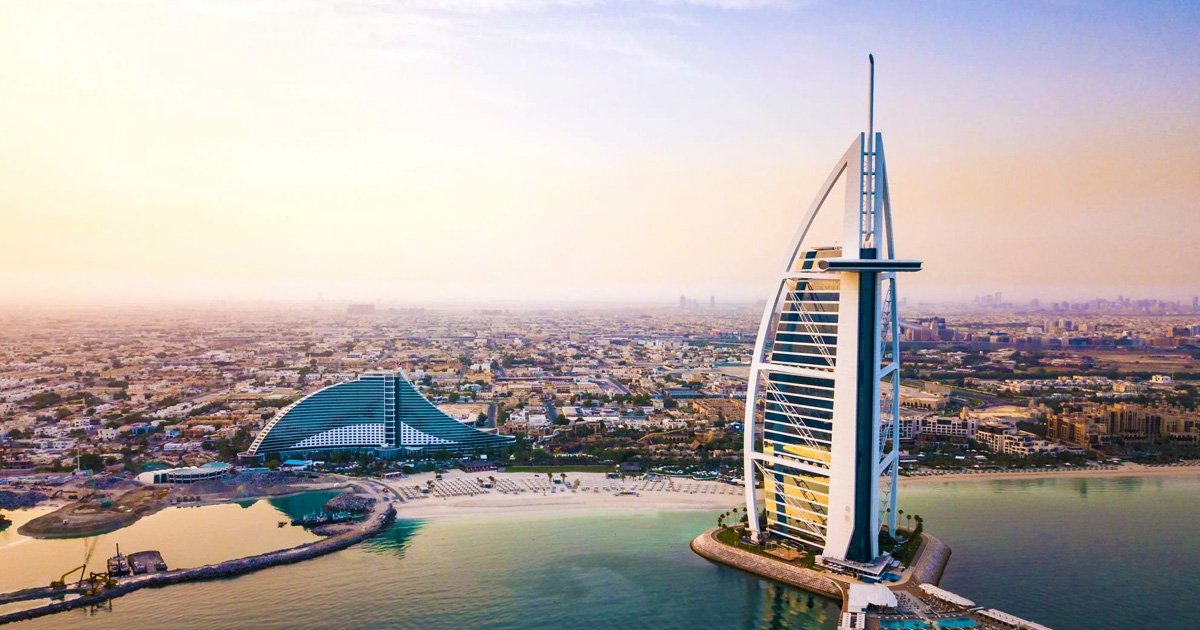
In the past, Dubai was a small city that depended on fishing and pearl trade , but now it has become one of the most important cities in the world. The city is home to about 200 nationalities and provides wonderful experiences for all visitors in different areas such as Dubai Creek, Downtown Dubai, Burj Khalifa , and much more. Dubai is also distinguished by its beautiful beaches, wonderful desert, and amazing tourist attractions.
Located in Al Garhoud, Dubai International Airport is about a 20-minute taxi journey to Dubai Mall and Burj Khalifa in the central district of Downtown Dubai. From the airport to Abu Dhabi is around 90 minutes by taxi.
Here are the various transport methods to get to and from the airport:
Here are the various transport methods to get to and from the airport:
By taxi: Taxis are always plentiful in Dubai International Airport (DXB) and offer an easy way to reach your destination in the city. Prices start at AED25 and the charge for each kilometre after is around AED2. Dubai Mall and Burj Khalifa are around a 20-minute drive from the airport, while Abu Dhabi Corniche is about one and a half hours away. You can also book a Tesla taxi before your flight and your driver will be waiting on arrival, with a fixed cost based on the kilometres travelled.
By rental car: You can drive into town by renting a car from numerous well-known companies at Dubai International Airport, including Thrifty, Hertz, Sixt and Dollar.
By Dubai Metro: The Red Line of the Dubai Metro connects directly to Terminals 1 and 3, making this a quick and inexpensive way to venture to and from the airport. Be sure to check the metro’s daily opening times before you arrive, as it is likely to be closed in the early hours of the morning.
By bus: There are a variety of buses that transport passengers to and from the airport. These include 11A from Terminal 1 (which goes to Gold Souq Bus Station), 13B from Terminal 2 (which goes to Al Qusais Bus Station) and 77 from Terminal 3 (which goes to Baniyas Square). Please note that you will need to purchase a Nol card before you take the metro or bus.
By shuttle: There is a free shuttle service between DXB and DWC airports which departs every 30 minutes, 24 hours a day.
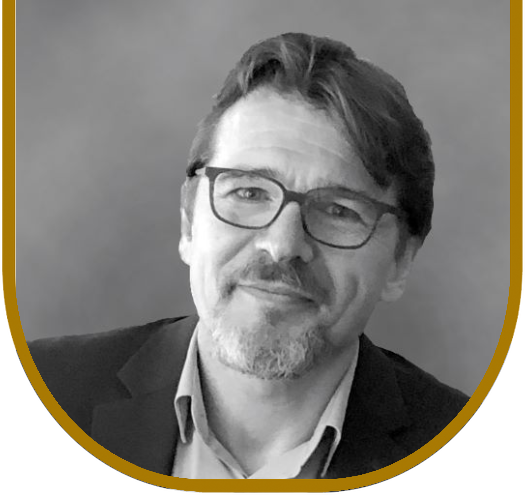
Paolo Caratelli is a Licensed Architect in Italy (OAPPC, Florence Chapter), and currently a full-time faculty as Professor, Program Leader of Interior Design, and Head of Research at Dubai Campus of Istituto Marangoni. He holds a M. Arch. Magna cum Laude, a specialization Master in Yacht Design, and a Ph.D. in Architectural and Urban Design from the University of Florence, Italy.
He collaborated on several projects as design manager and planner for private developers and public institutions as well. He moved to the UAE in 2008 as Managing Director for a leading architecture firm, then in 2011 he joined Abu Dhabi University as Associate Professor until August 2023, before moving into his current role at Istituto Marangoni, Dubai.
Paolo is an active researcher on architectural and urban sustainability, and investigator about social and cultural changes in urban, architectural, and interior design. He published in several international peer-reviewed journals and conference proceedings, serving also as Guest Editor and reviewer.
His research activity focuses on design and technology integration into habitats in isolated confined extreme (ICE) environments as paradigm of self-sufficiency and environmental sustainability, and investigation of complex habitation systems as techno-theoretical resource for buildings in ordinary environments. A special focus is dedicated to the psycho-physiological effects of confinement on occupants in ICE habitats and possible remedies through design and spatial organization, integration of Bio-regenerative Life Support Systems (BLSS) into ICE habitats including movable disaster relief facilities, desert and polar regions, underwater facilities, and habitats in low and micro-gravity environments in space.
Paolo is an Associate Member of AIAA (American Institute of Aeronautics and Astronautics), Board Member of AIAA-SATC (Space Architecture Technical Committee) and AIAA-SSTC (Space Settlements Technical Committee), Board Member of IAF-SHC (International Astronautical Federation-Space Habitats Committee) and Expert Member of MVA (Moon Village Association).
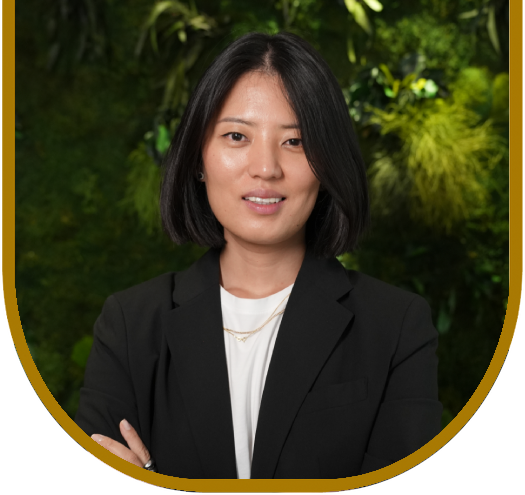
Irina An is the Programme Leader for Fashion Design at Istituto Marangoni Dubai. She graduated with an MA in Fashion Design from Central Saint Martins College of Art & Design in London, and is a Fellow of the Higher Education Academy in the UK. Irina's work experience includes companies such as Alexander McQueen, Hussein Chalayan, and Diane von Furstenberg in London, Paris, and New York. Irina has coordinated the final year in BA Fashion Design and overseen the Portfolio unit at The University for the Creative Arts in the UK. As a fashion designer, she values conceptual ideas, a deep understanding of colour, and the incorporation of masculine elements in womenswear.
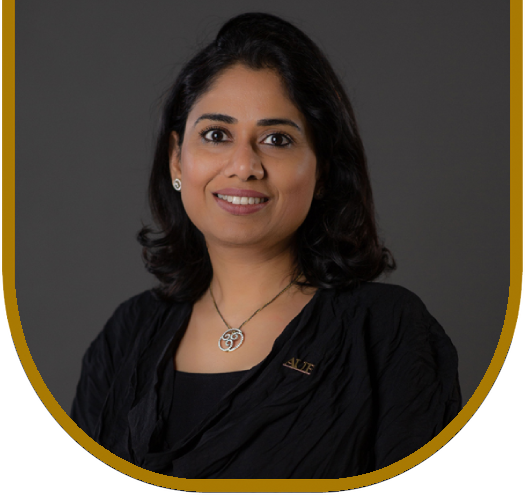
Shlagha Agarwal is an accomplished educationalist, academic administrator, and researcher with over 23 years of experience in higher education at leading academic institutions. She currently serves as an Assistant Professor and Chair of the Fashion Design program at the American University in the Emirates, Dubai.
A prolific researcher, she has an extensive record of publications in renowned peer-reviewed journals and books and has presented her work at numerous international conferences. She is also actively involved in curating student exhibitions and has showcased her own creative work at prestigious fashion events in Dubai.
Her research interests include fashion design pedagogy, design thinking, and sustainability, reflecting her dedication to advancing contemporary fashion education.

Luca Finotti is an Italian designer and director who has made fashion films for Nike, Versace, Dolce & Gabbana, Giorgio Armani, Givenchy by Ricardo Tisci, Moschino, Hugo Boss, Golden Goose Deluxe Brand, Jeremy Scott, Adidas, River Island, Tod's, Cover Girl, Rimmel London Look, Martini, MSGM and Pitti, to name but a few. He has also collaborated with international magazines such as Vogue Italia, Vogue China, Dazed & Confused, i-D Magazine and Hercules Magazine.
With a degree in marketing and economics from the renowned Luigi Bocconi University in Milan and after studying film at the New York Film Academy, Luca acquired all the necessary skills to become a successful director of artistic and viral films, combining powerful moving images with the development of social media. His creations always start with an idea that is then developed based on trend research to ensure the global virality of each film and campaign and to make each project a visible and sharable online experience in the millennial era. His projects have achieved a high level of virality across all new media, allowing them to become widely known.
His portfolio is full of national and international stars such as Lady Gaga, Jeremy Scott, Sita Abellan, Gigi Hadid, Monica Bellucci, Sofia Vergara, Paris Jackson, Emmanuelle Seigner, Roberto Rossellini, CL, Stephen Dorff, Marco Mengoni, Amanda Lepore, Janelle Monae, Bianca Balti, Karlie Kloss, Simone Nobili and Simon Nessman. Earlier in his career he worked with the likes of Arianne Phillips, Michelangelo di Battista, Nicola Formichetti, André Turpin, Anna Dello Russo, Mariano Vivanco, Jenke Ahmed Tailly, Sara Maino, Paolo Zagoreo and Giovanni Dario Laudicina.
For his recent project Versace Manifesto , he won the Best Director award at the prestigious Cinemoi Film Festival 2018 in Los Angeles. His project #WeBelievelnThePowerOfLove for Nike was screened and won over 25 film festival awards and official selections worldwide.

Sofia studied classics and architecture at the University of Florence before furthering her education at the Fashion Institute of Technology. After settling in Paris, she joined DIOR as a designer during the John Galliano era, immersing herself in the world of couture and cinematic fashion shows. With a passion for luxury and craftsmanship, Sofia later founded her own consulting company and worked with renowned brands, including Karl Lagerfeld. Throughout her career, she explored various artistic projects, such as costume design for contemporary ballets. Driven by a desire to create positive change, Sofia founded AELIS in 2017, the first sustainable and ethical couture house, dedicated to women’s empowerment and environmental respect.

Shahram Agaajani is the Founding Partner of Metaform Architects, an award-winning architecture firm based in Luxembourg and Dubai. Born in Tabriz, Iran, in 1976, he studied architecture at La Cambre in Brussels, graduating Magna cum Laude in 2001. Two years later, he co-founded Metaform with Thierry Cruchten, shaping it into a dynamic multidisciplinary practice with over 55 collaborators. Under his leadership, the firm has delivered landmark projects such as the Luxembourg Pavilion at Expo 2020 in Dubai, the POST Headquarters in Luxembourg City, the Skypark Business Center, and the country’s first Velodrome. Known for his bold, innovative approach, Shahram’s work is driven by creativity and technical precision. Beyond architecture, he has contributed to the profession as a lecturer, jury member, and editor. Passionate about aviation, mechanics, and marine life, his curiosity extends far beyond the built environment, fueling his pursuit of design excellence.

Rita White, President of the Italian Academy of Biophilia (AIB), is an Environmental Psychologist and a prominent expert in Biophilic Design. Her mission is to promote the concept of Biophilia. our innate bond with nature to enhance wellbeing, foster prosperity, and support environmental stewardship. A renowned TEDx speaker and recognized by Fortune as one of Italy's Most Powerful Women, Rita has been a key advocate for establishing Italy’s first Biophilic City. Through her extensive work in education, public outreach, research, and consulting, she translates scientific evidence into actionable strategies to create healthier, more sustainable, and nature-connected environments. Rita’s leadership and commitment are actively shaping a society that prioritizes human and environmental wellbeing, inspiring a global shift towards harmonious coexistence with nature.

Dr. Ahmed Farid is a renowned Egyptian artist, actor, and art philosopher, whose diverse creative journey has spanned visual arts, acting, and humanitarian work. His artwork, known for exploring themes of freedom, hope, and the human soul, has been featured in solo exhibitions around the world. His unique visions and artistic techniques have earned him international recognition and awards, including his appointment as a United Nations Goodwill Ambassador.
He is a visionary artist whose creations transcend boundaries, blending profound symbolism with a deep commitment to social causes. His art not only captivates the eye but speaks directly to the soul, embodying the values of the universal human spirit. His work is a masterful exploration of art's ability to elevate and deepen our understanding of human’s experience.
Academically, Ahmed Farid holds a bachelor’s degree in fine arts & graphic design. Driven by his passion for art history and philosophy, he pursued postgraduate studies, earning master’s degree followed by a Ph.D. in Fine Arts from the Academy of Art in San Francisco
Ahmed is deeply committed to social art. His work does inspire and attract audiences worldwide, through his profound belief in art's healing power, and through his consistent demonstration of the art transformative ability to nurture inner strength and personal growth.
Alongside his successful visual arts career, Farid also established himself as a prominent actor, with notable roles in television series, films, documentaries across the Middle East.
|
Cancellation Policy |
Up to 60 days before the event |
Up to 50 days before the event |
Up to 40 days before the event |
39 days before the event |
|
Penalty |
20% |
50% |
70% |
100% |
EXCEPTION
A refund is not possible if
-An acceptance letter has been issued (Authors only)
-The proceedings of the event have been published (Authors only)
-A visa invitation letter has been issued (All participants)
Visa Rejection Cases
Reason and proof of rejection must be submitted. If the reason for rejection is due to an error on our part, the participant will be refunded their full fee with a deduction of a 20% administration fee.
Documents to be issued by IEREK to acquire a visa are as follows:
*Final Acceptance Letter (Authors only)
*Visa Invitation Letter
*Invoice/proof of payment
We encourage all authors and attendees to ensure their having acquired all documents (those applicable) mentioned.
If the reason for rejection is not related to any of the aforementioned and is an error on the participant’s part, the following will apply:
*Authors: may choose to let their co-author present his/her research on his/her behalf free of charge. If the author does not have a co-author, a member of the scientific committee shall present on the author’s behalf.
*Audience members/Registrants: will only be allowed to attend another similar event of their choosing that is organized by IEREK free of charge.

ORCID, which stands for Open Researcher and Contributor ID, is a global, not-for-profit organization that aims to provide unique identifiers for authors, researchers, and scholars. ORCiD effectively eliminates duplication and errors regarding author names, affiliations, previous works, and all related academic data.
IEREK is a proud member of ORCiD, and we contribute directly to their initiative of clear and identifiable markers for researchers and scholars. As the first Egyptian partner to ORCiD in the organization’s history, we strongly believe that by utilizing ORCiD’s database and verification services, we become one step closer to achieving an accurate, and identifiable academic landscape.
We encourage our authors to input their ORCiD ID when registering for one of our conferences, submitting an abstract, or a full paper. By doing so, you directly link your research to your identity and affiliation and can showcase your various academic efforts all in one place. By Registering your ORCiD ID, you also increase your works’ visibility and provide easy access to your entire library of research and academic activity.
Click here to learn more about ORCiD, and here to register your ORCiD ID for free.

Istituto Marangoni
Istituto Marangoni, with over 85 years of history, has been a global leader in nurturing talent in fashion, art, and design. Known for its "Italianness" that embodies luxury, craftsmanship, and elegance, the institute operates in prestigious locations like Milano, London, Paris, and Shanghai, offering a unique international study experience to over 4,000 students from 107 countries. Its modern and industry-focused curricula, supported by expert tutors and partnerships with top companies, empower students to excel in design, communication, and management. Dedicated to fostering creativity and innovation, the institute continually adapts its programs to meet evolving global demands, making it a hub for cultural exchange and professional development in fashion, art, and desig.

Abu Dhabi University
Abu Dhabi University (ADU), the largest private university in the UAE, is a leading academic institution ranked among the top 3 in the country and within the top 200 universities globally by the Times Higher Education World University Rankings 2025. Established in 2003, ADU offers over 50 internationally accredited undergraduate and postgraduate programs through five colleges across campuses in Abu Dhabi, Al Ain, Dubai, and Dubai Knowledge Park. Known for its faculty and student diversity, with over 8,000 students from nearly 100 nationalities, ADU excels in teaching, impactful research, and alignment with the UAE’s national agenda. Its programs span arts, law, education, business, engineering, and science, including training for UAE Armed Forces personnel, fostering academic excellence and global readiness.




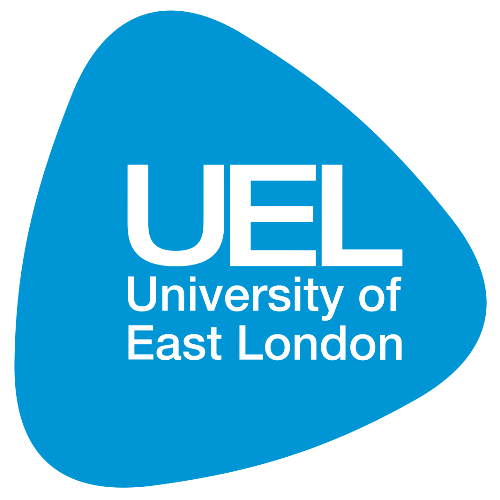







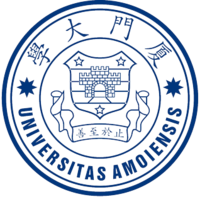

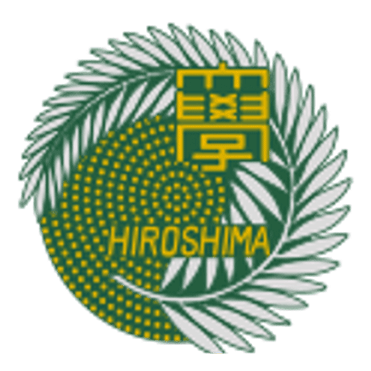
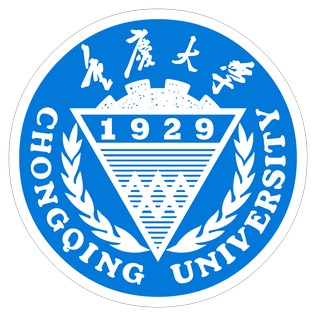
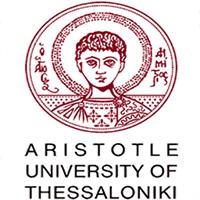
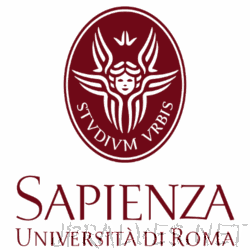
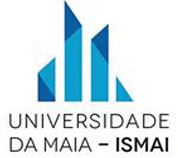



Professor, Program Leader of Interior Design, Head of Research
Istituto Marangoni Dubai – UAE

Associate Professor at the DESTEC Department of the University of Pisa, specializing in Industrial Design (ICAR/13).
Istituto Marangoni Dubai – UAE

Head of Dubai Opera, is a leading cultural leader recognized for his contributions to the arts in the Middle East and beyond
Istituto Marangoni Dubai – UAE

President of the Italian Academy of Biophilia (AIB), is an Environmental Psychologist and a prominent expert in Biophilic Design.
Istituto Marangoni Dubai – UAE
Menna Yasser
Conference Coordinator
(+20) 3 5763827 | (+20) 3 5763828
(+20)1000028021
Subscribe to our newsletter
Join IEREK community